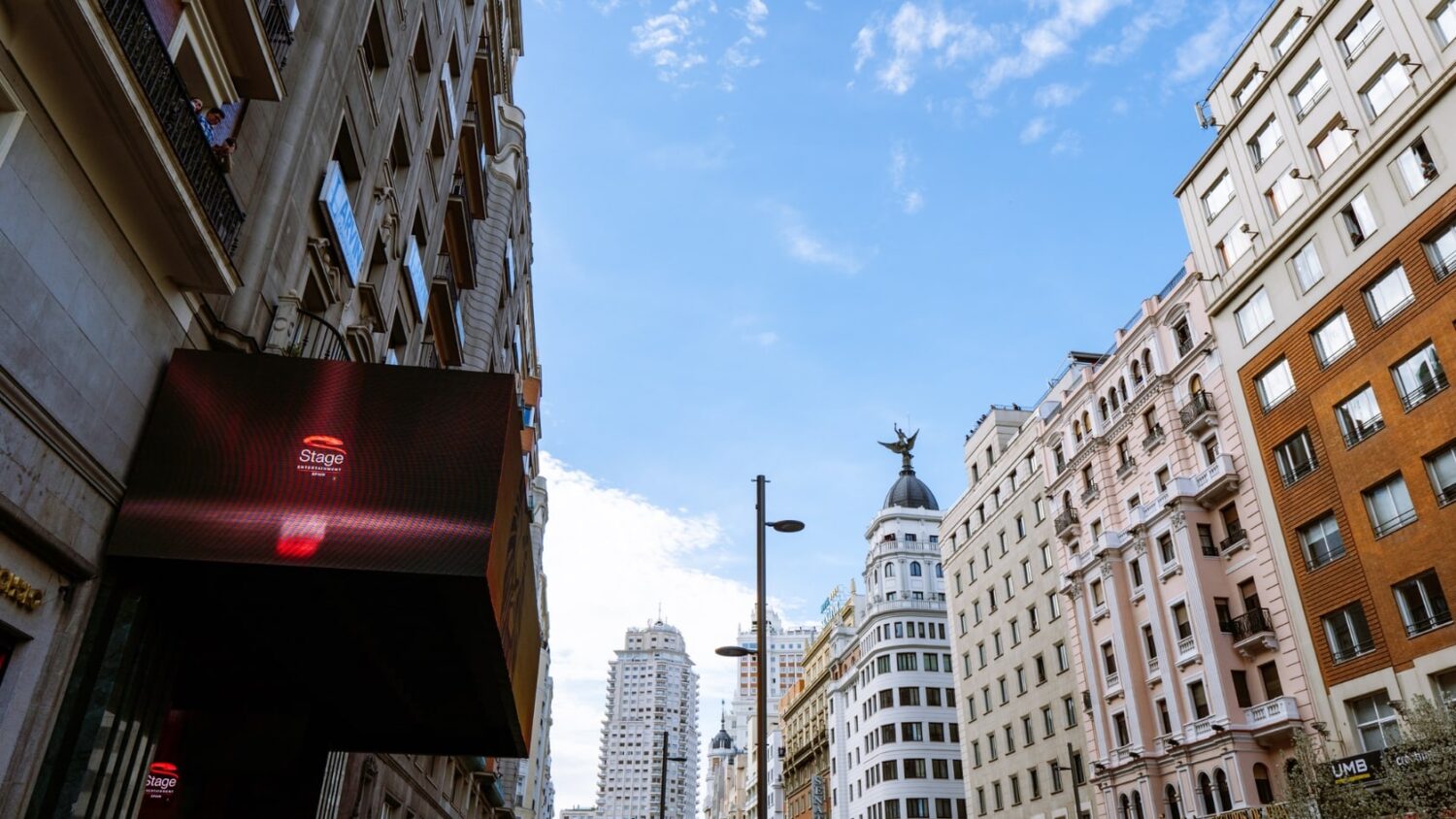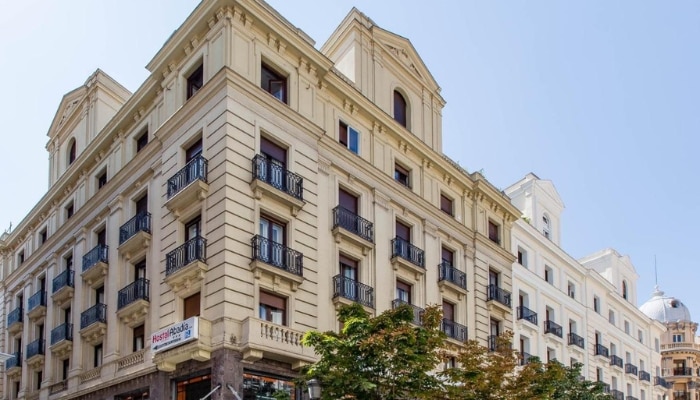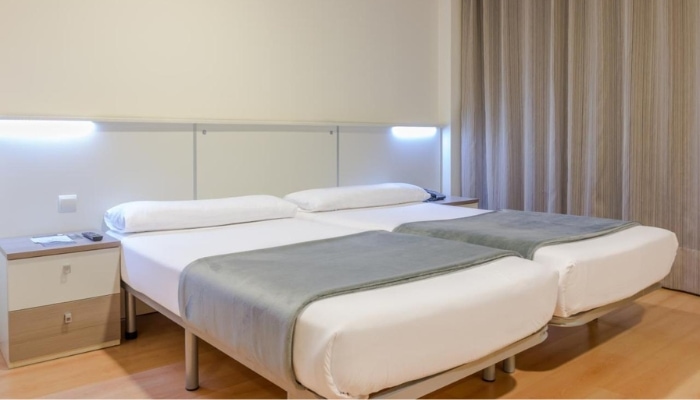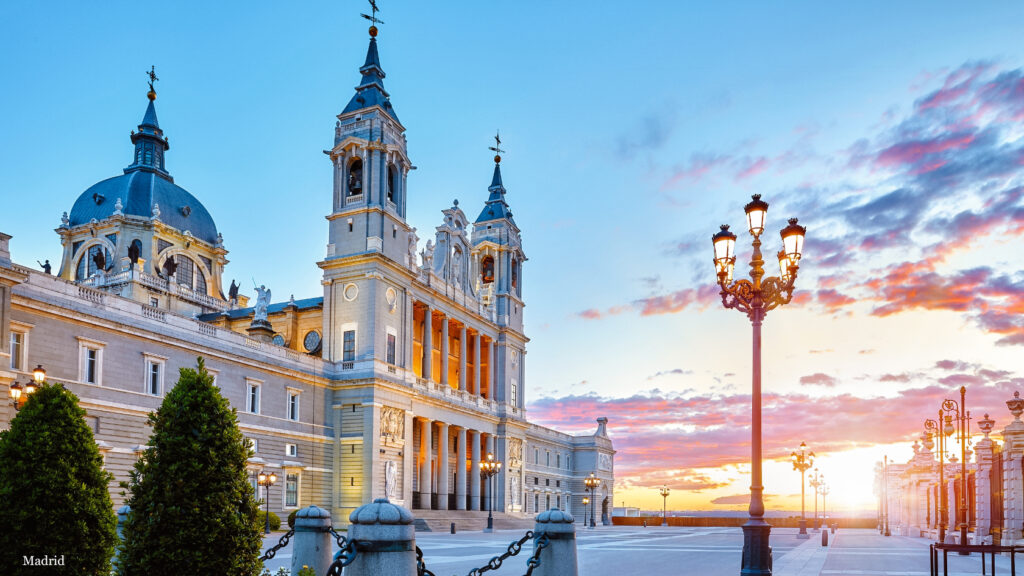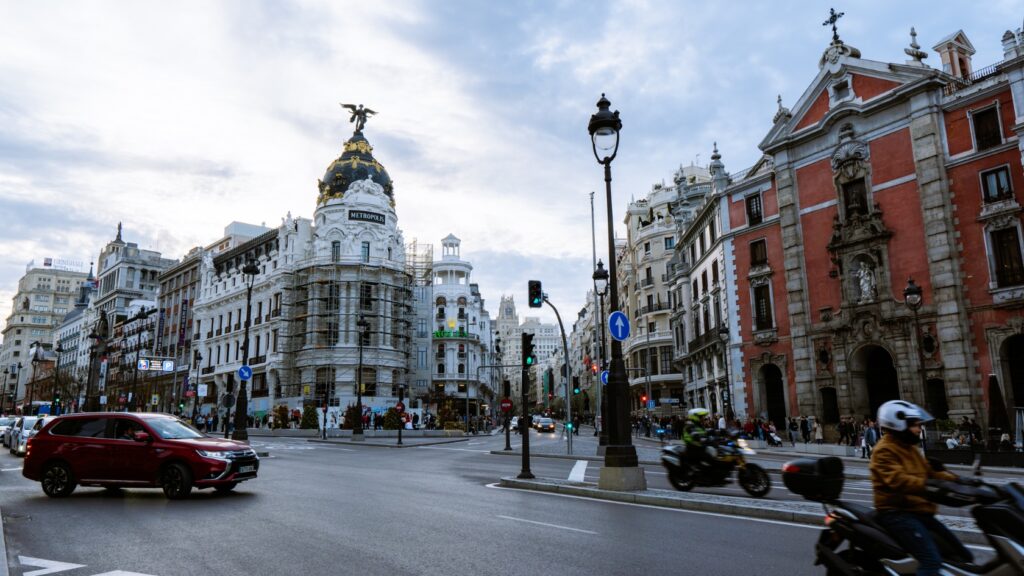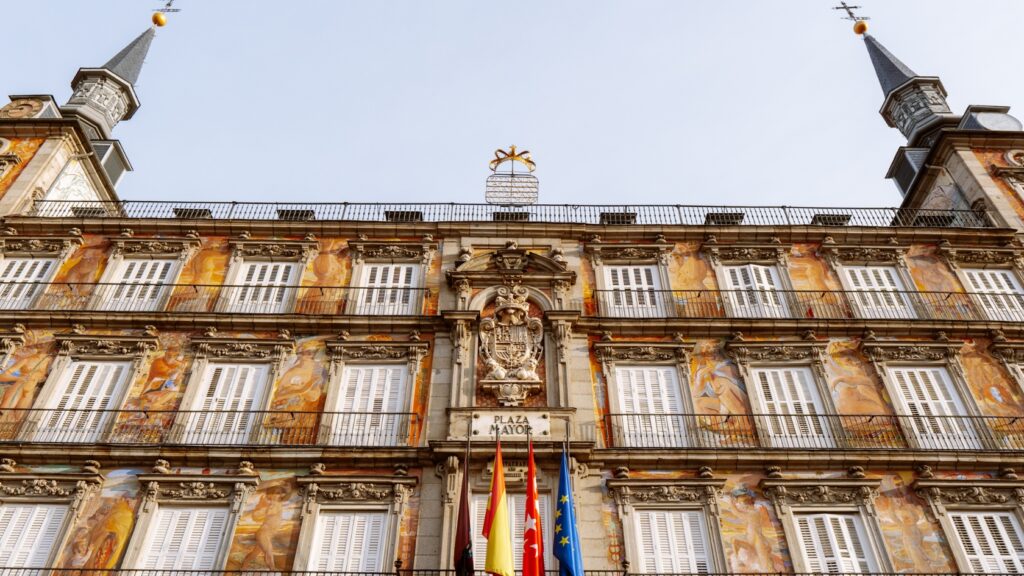Madrid is known for its iconic landmarks such as the Royal Palace and the Cathedral of Our Lady of Almudena, as well as its rich history, beautiful gardens and world-famous galleries. This itinerary for 3 days in Madrid brings you the best sights and attractions to see in Madrid.
I’ve designed the itinerary to cover Madrid’s favourite sights, renowned museums, lush gardens and authentic neighbourhoods that are among the best of Madrid.
Madrid is an elegant city known for its lively and authentic atmosphere that will keep you coming back. It may not have Gaudi’s buildings and Barcelona’s sea, but it still charmed us even more. With its gorgeous parks, ornate buildings, tapas bars and incredibly local atmosphere, you’ll feel great.
- Madrid in 3 days – route map
- WHAT TO SEE IN MADRID IN 3 DAYS
- THREE DAYS IN MADRID – ITINERARY FOR 1ST DAY
- WHAT TO SEE IN MADRID IN 3 DAYS
- THREE DAYS IN MADRID – ITINERARY FOR 2ND DAY
- WHAT TO SEE IN MADRID IN 3 DAYS
- 3 DAYS IN MADRID – ITINERARY FOR 3RD DAY
- Hotels in Madrid
- How to get to Madrid
- How to get around Madrid
- More information about Spain
Madrid in 3 days – route map
On the map you will find the route to Madrid in 3 days. The route can be largely walked, so as well as visiting the sights and attractions, you will also experience the true local atmosphere.
We start in the historic centre of Madrid around Plaza Mayor and the main avenue Gran Vía. We will gradually visit more monuments, authentic neighborhoods and world-famous museums. We will walk through the vast parks full of flowers and taste delicious churros. And there’s time if you’d like to go to a Real Madrid game.
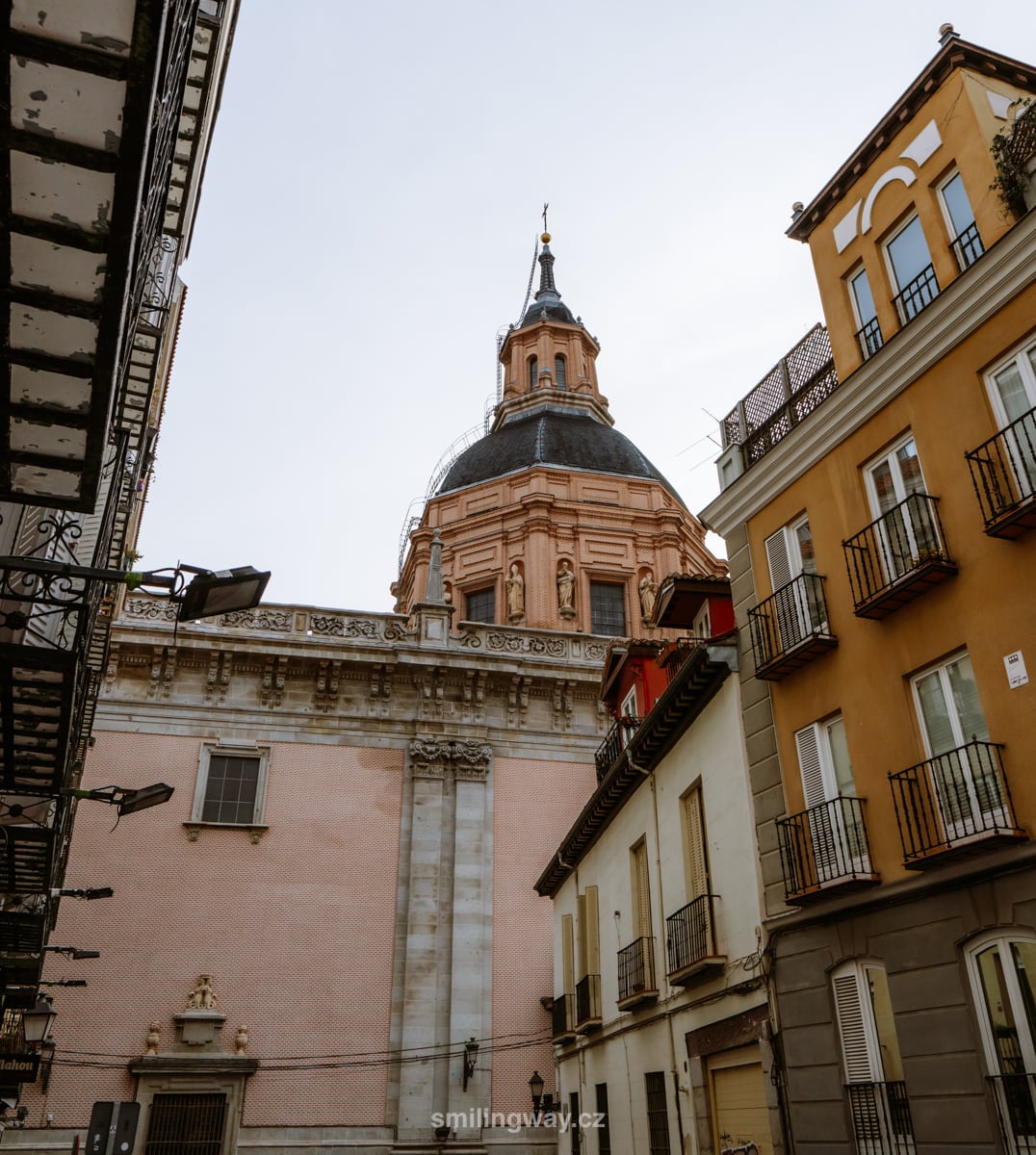
We think 3 days in Madrid is the perfect base for exploring the city centre and surrounding areas. Madrid is a big city and you would need at least a week to explore it more closely. But the most popular sights and places are close to each other, so you can see a lot in a short visit.
HOW TO USE THIS MAP: Above you will find a detailed map with an itinerary of what to see in Madrid in 3 days. Click at the top left of the map to see separate layers with highlighted locations. You can hide and show the different layers or click on the icons on the map to see the names of the places I mention in the itinerary for three days in Madrid, Spain. If you want to save the map, star it. For a larger version, click on the icon in the upper right corner.
WHAT TO SEE IN MADRID IN 3 DAYS
THREE DAYS IN MADRID – ITINERARY FOR 1ST DAY
- Plaza Mayor and San Miquel Market
- Cibeles Palace and Gran Vía
- Plaza de España and Debod Temple
The first day will be spent in the heart of Madrid, a perfect introduction to the Spanish capital. Moreover, it hides several places that you should not miss when visiting Madrid.
We’ll walk along the Gran Vía and visit an Egyptian monument you might not expect to see in Madrid. We end the day in an authentic neighbourhood where locals go to eat or hang out in one of the bars.
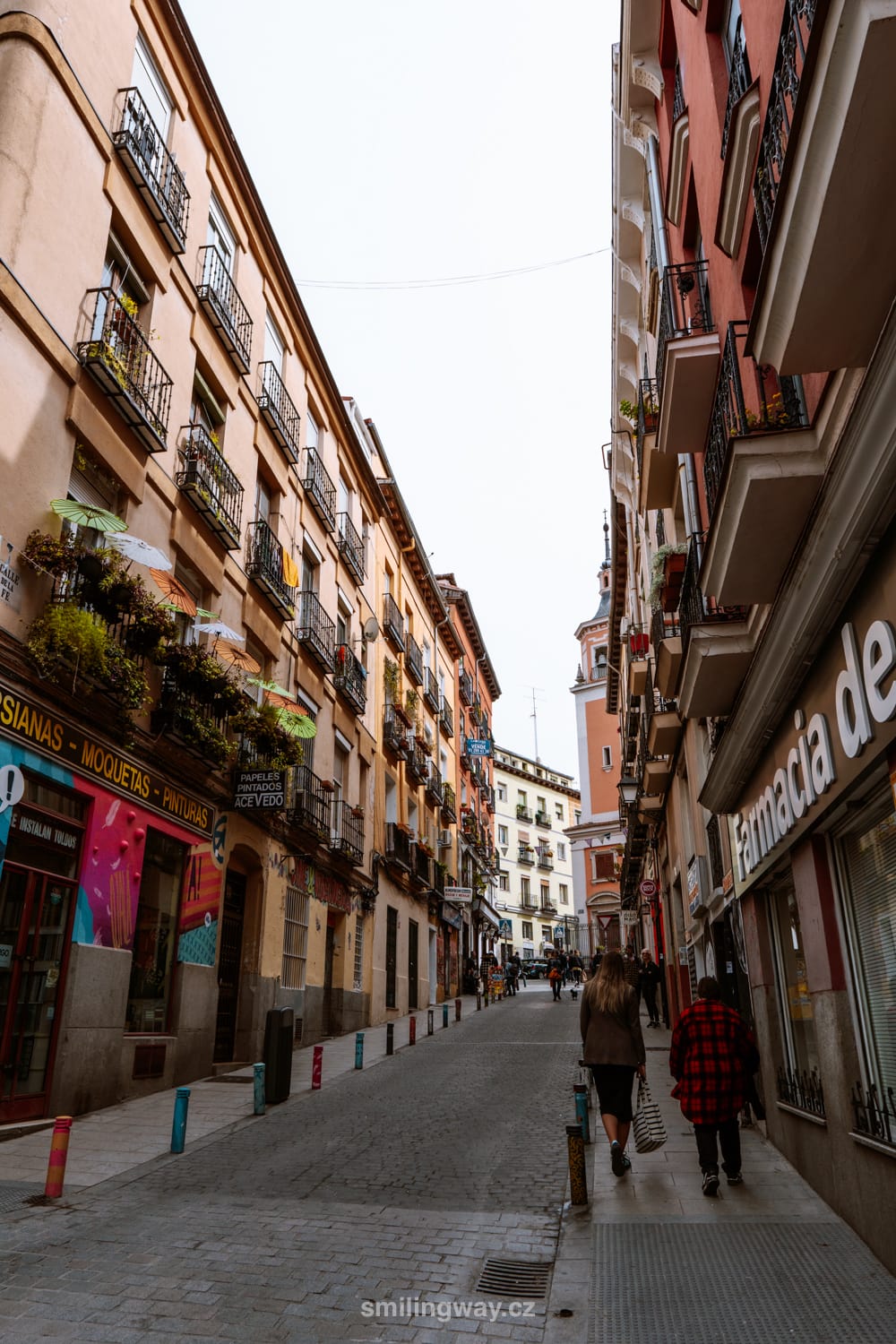
Plaza Mayor
Visit Plaza Mayor, an important square in Madrid with a statue of Felipe III. on horseback. The square is closed and can be reached by one of the 9 entrances. It is lined with Baroque residential buildings with beautiful paintings.
You can sit in one of the restaurants with an open garden and watch the surrounding cricket. And there’s plenty to see – Plaza Mayor is one of the most visited places in Madrid. If you want to avoid the crowds, put it at the top of your itinerary.
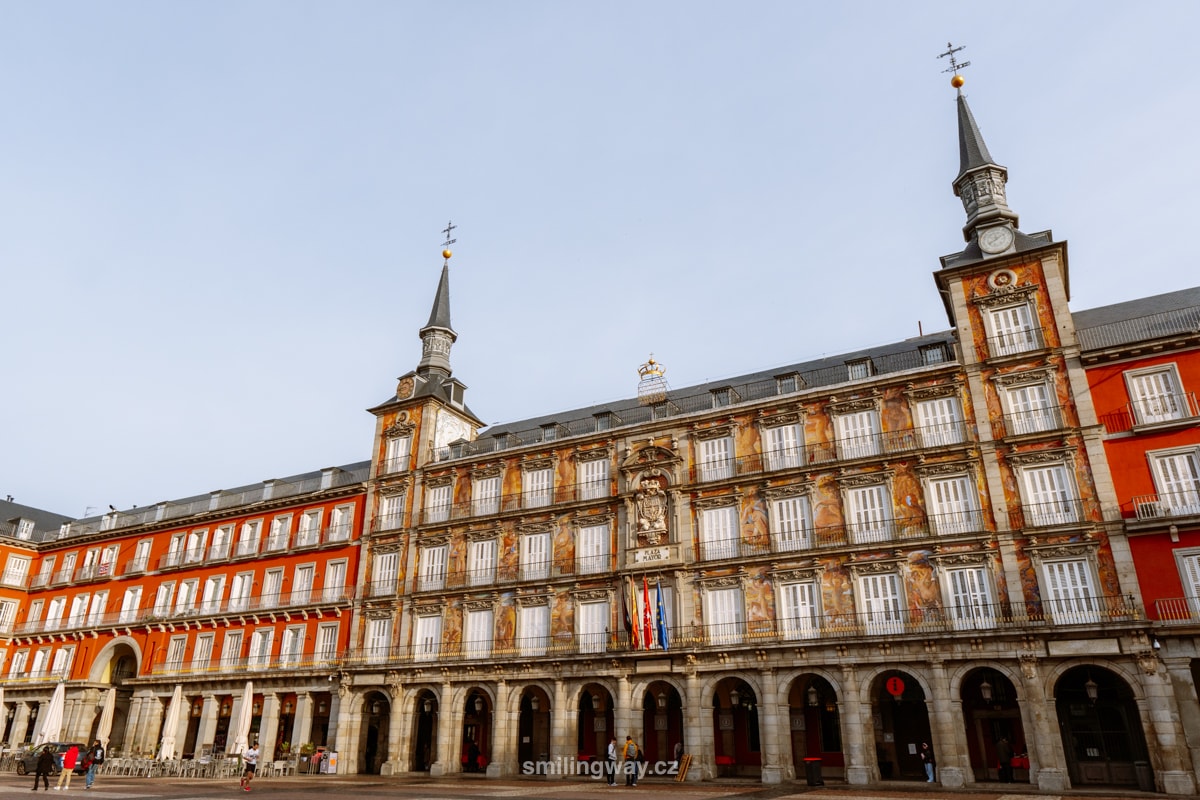
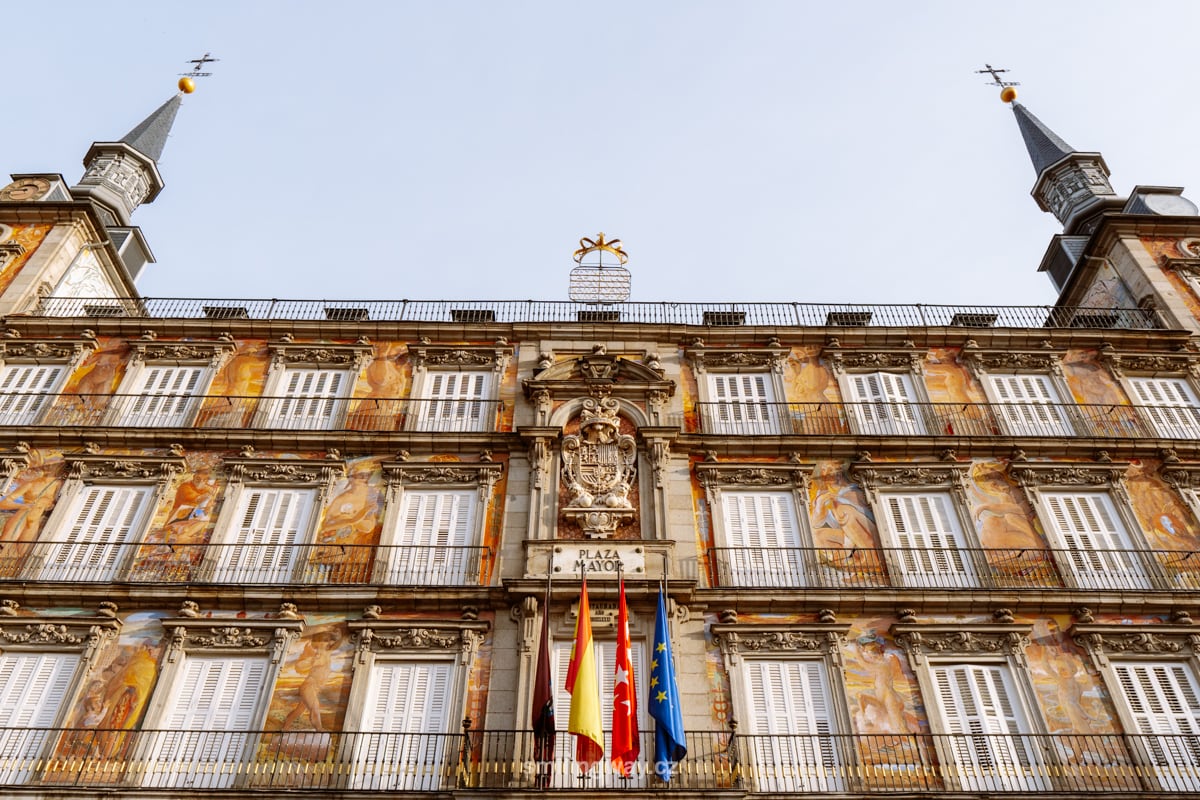
Mercado de San Miguel
Just steps from Plaza Mayor is Madrid’s most famous market, Mercado de San Miguel, a covered market housed in a beautiful Art Nouveau building.
If you want to shop for local food or grab a bite to eat, don’t miss a visit to the market. The markets are typical of Madrid and the whole of Spain. And very popular among tourists.
Mercado de San Miguel opens daily at 10:00 and stays open until late at night. And thanks to its central location, you can come back at any time of the day or your stay in Madrid.
Walk through the surrounding streets and after a while you will reach Chocolatería San Ginés. If you want to taste the real chocolate and delicious churros, head here. Depending on the time of day, there may be a queue, but it passes quickly and is well worth the wait. It is open from morning until late at night.
Hotels in Madrid 😴
Puerta del Sol
Just a few minutes walk and we are in another famous square – Puerta del Sol. This is the central square in Madrid, where originally stood one of the eastern gates decorated with the sun. This is where the square gets its name – translated as “Sun Gate”.
The most striking structure of Puerta del Sol is the post office building with its clock, which is used every year for the televised countdown of the last minutes until the arrival of the New Year.
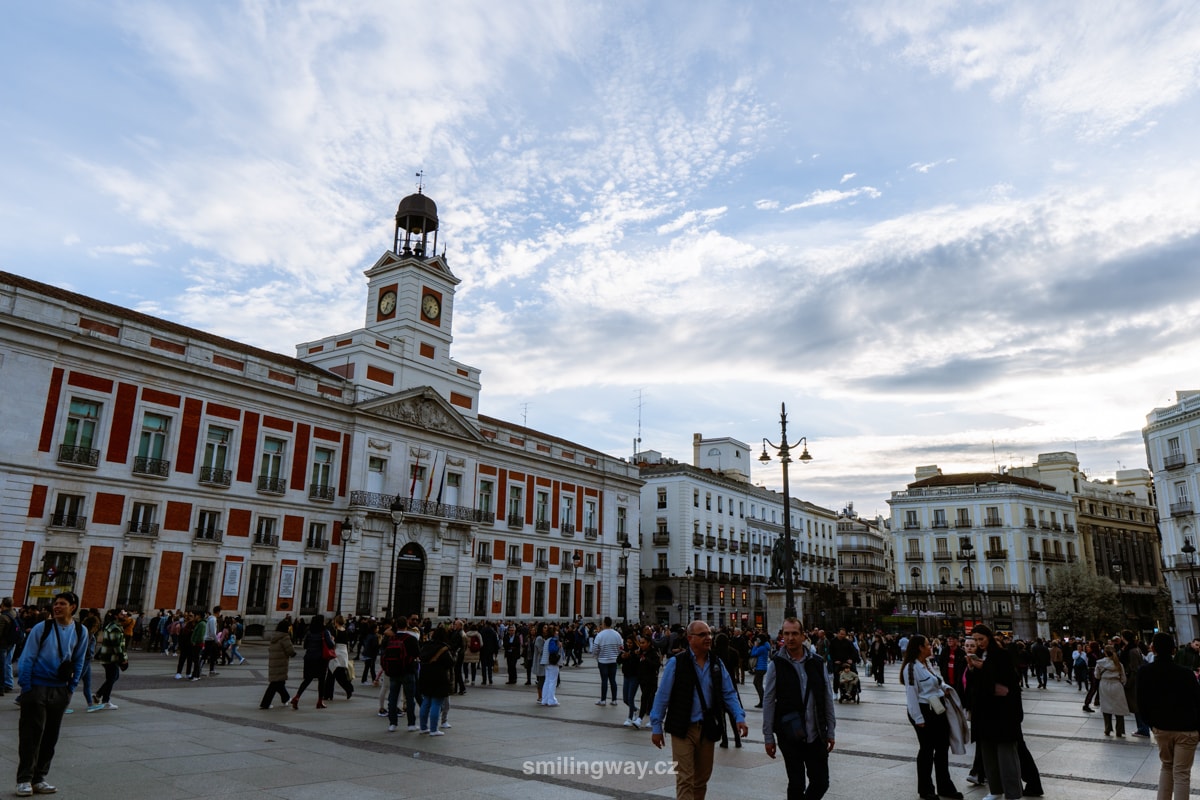
In the corner of the square is a statue of a bear by a strawberry tree, a symbol of Madrid since the Middle Ages and the coat of arms of Madrid. Getting a photo of it without tourists taking photos is a bit of a superhuman task, but it’s still a symbolic place to stop briefly.
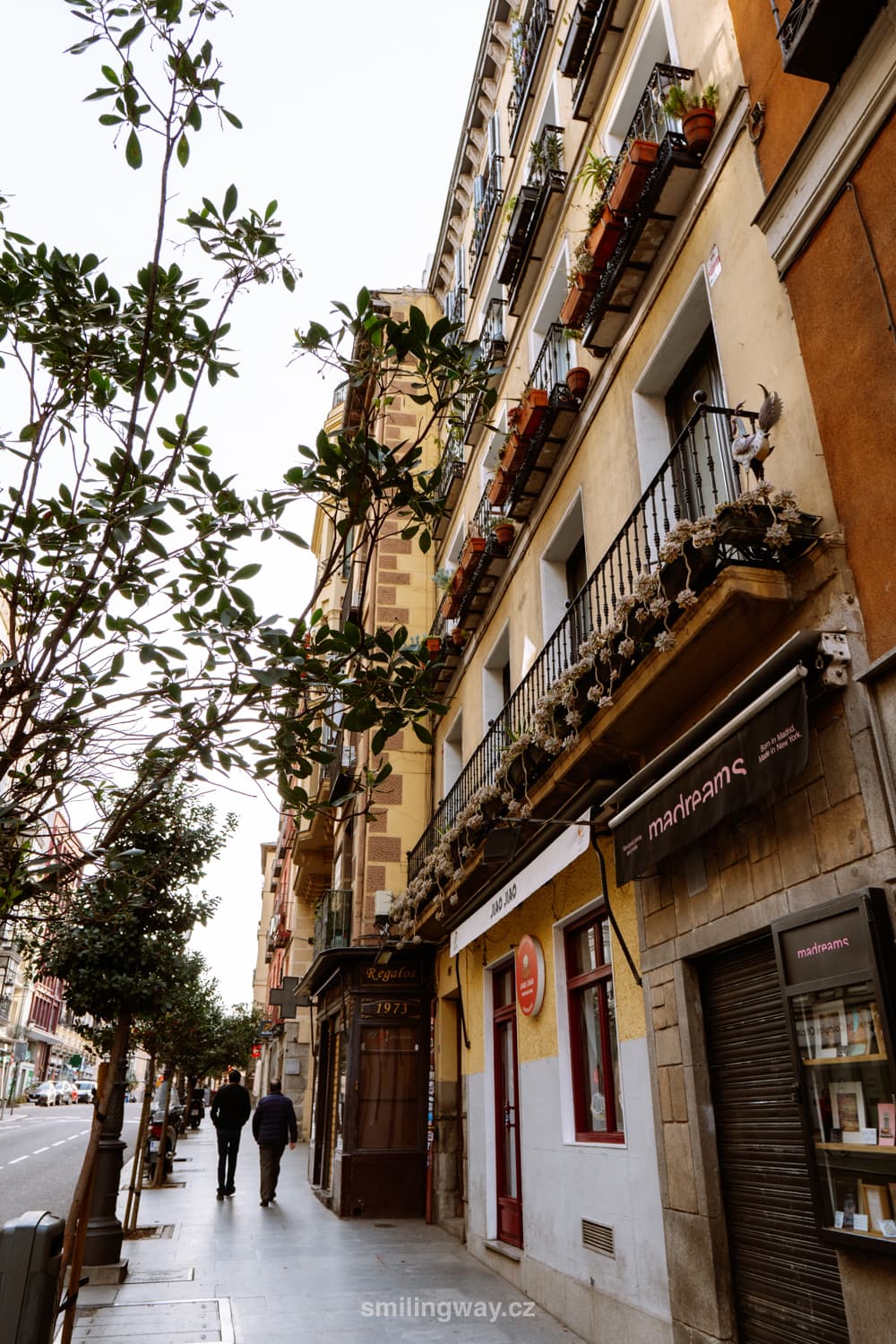
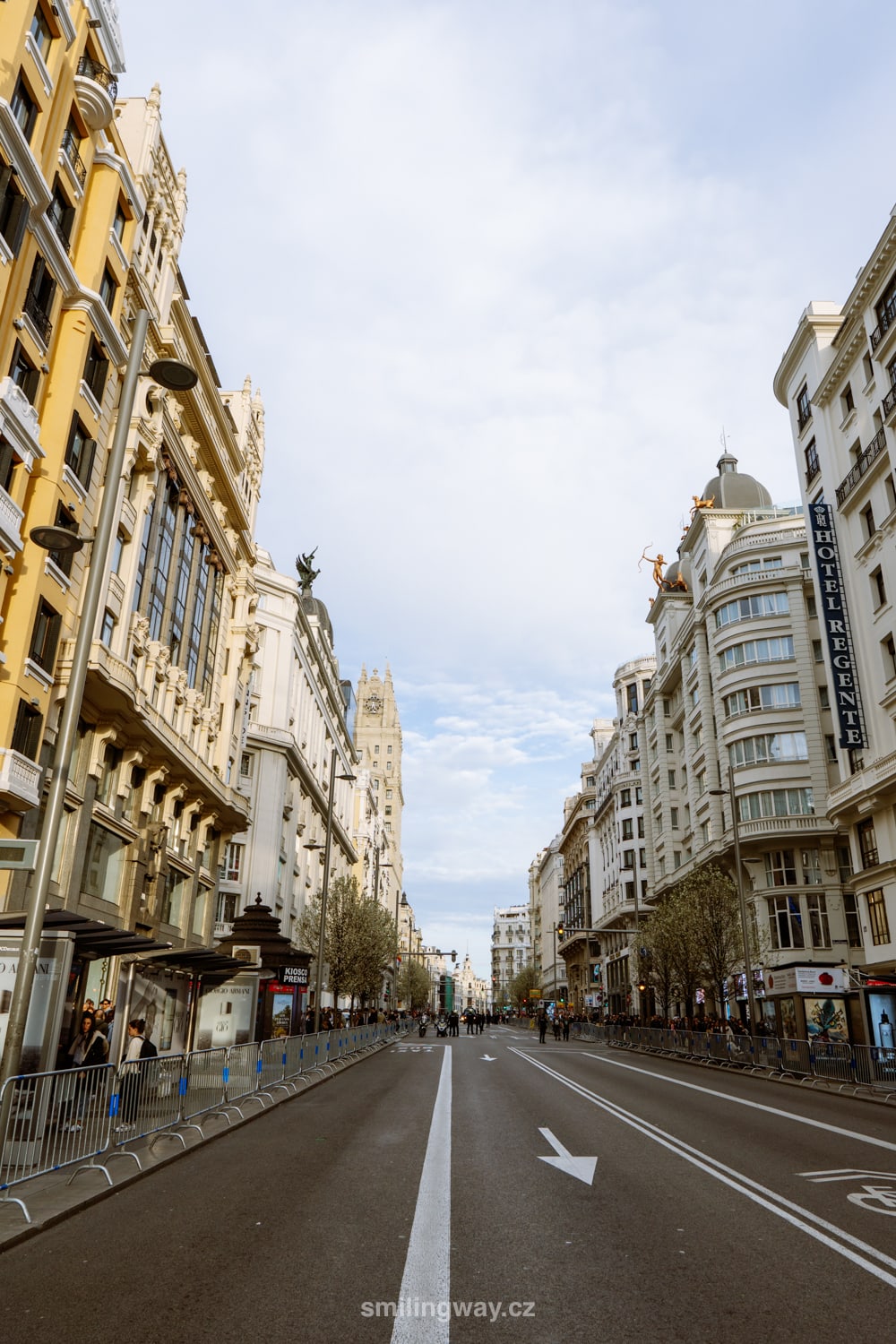
Palace of Cibeles
Follow the main avenue lined with ornate buildings to the Cibeles Palace.
The Cibeles Palace is one of the most beautiful buildings in Madrid. It used to be the headquarters of the post office, today it is the seat of the town council. The 8th floor restaurant overlooks the bustling Plaza de Cibeles right in front of the building.
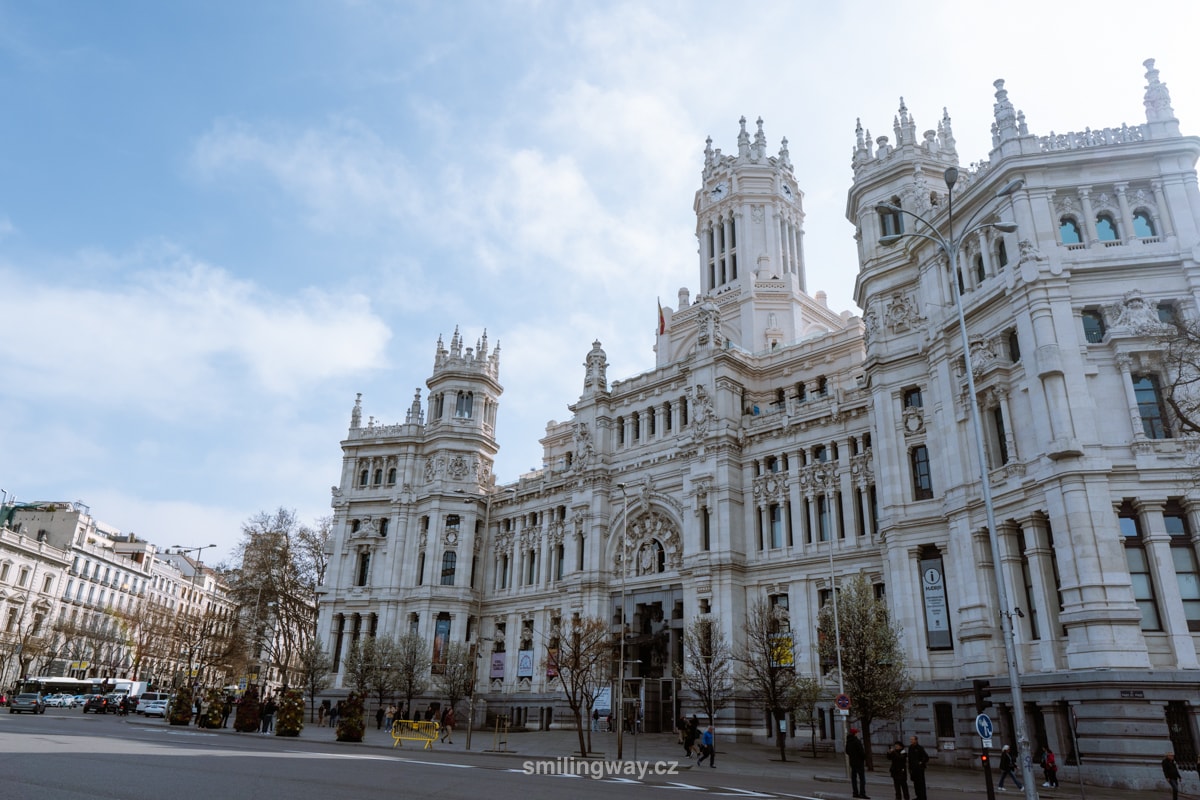
The lookout is open daily except Mondays from 10:30-14:00 and 16:00-19:30. Full admission is €3, with a discount for children, seniors and disabled persons. You can book your tickets here.
Plaza de Cibeles in front of the palace is dominated by the famous fountain, which depicts the goddess Cybele sitting on a chariot pulled by lions.
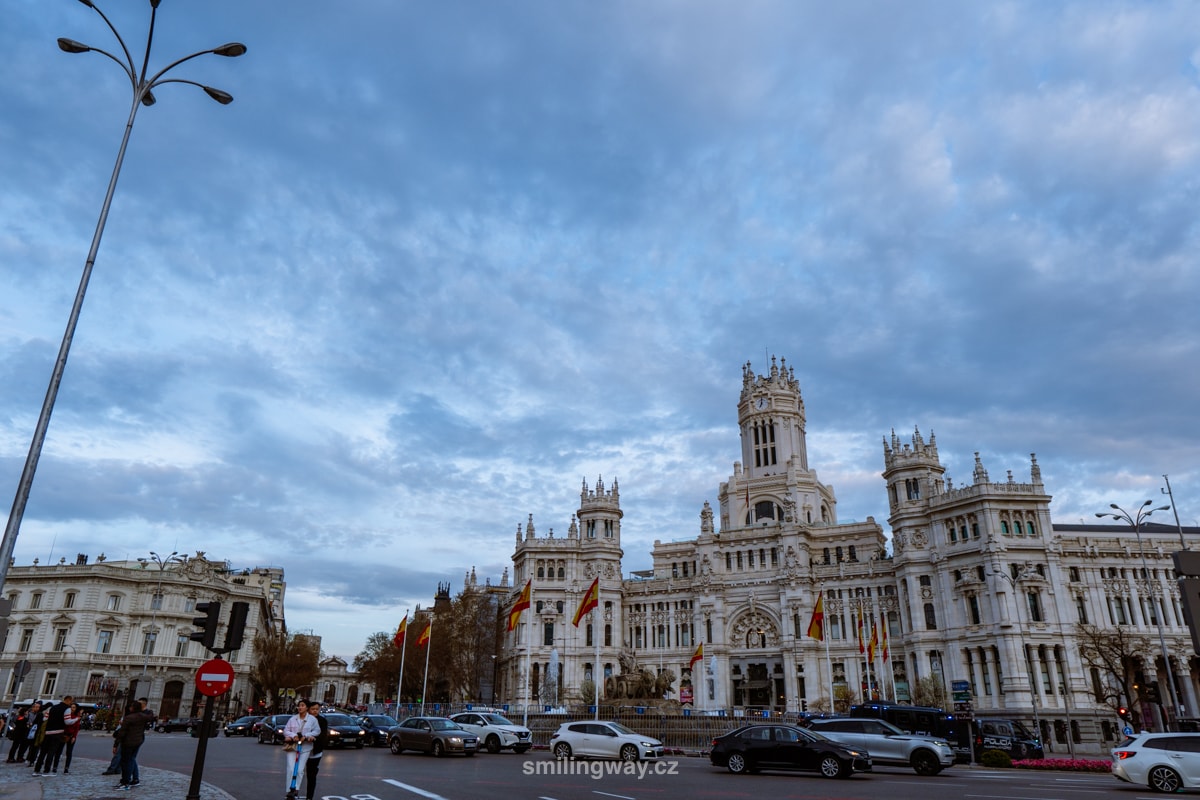
Gran Vía
Gran Vía is the most famous avenue in Madrid, lining the historic centre and connecting the Cibeles Palace with Plaza de España. It is lined with well-preserved buildings housing restaurants, shops and bars. This place is alive till the wee hours of the morning.
Be sure to stroll Gran Vía in the evening too, when the avenue glows with neon billboards.
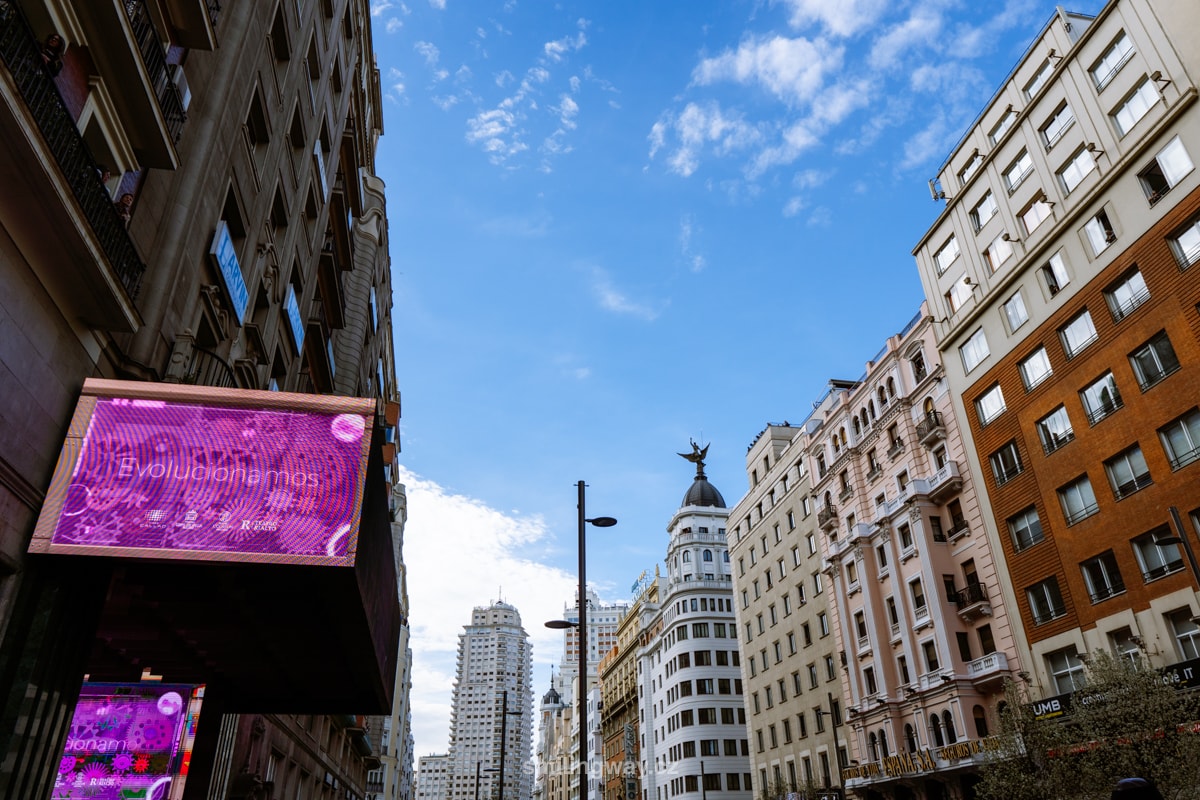
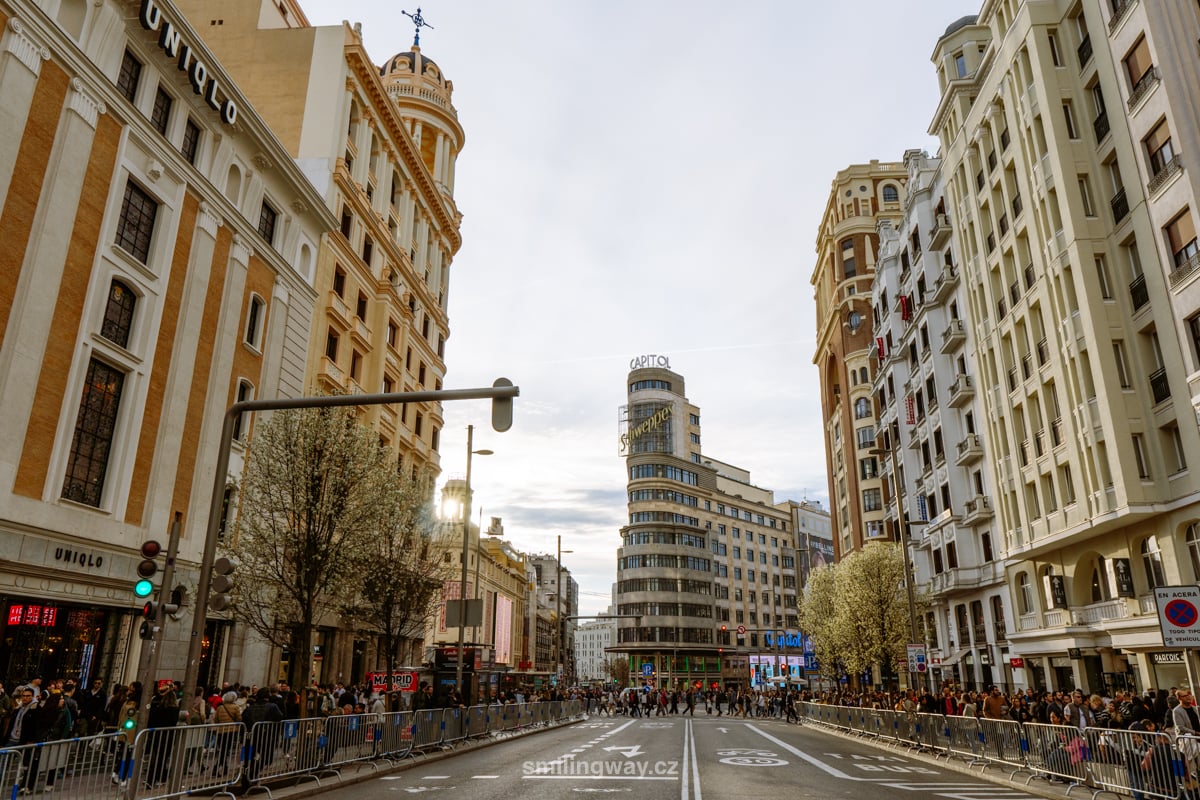
For one of the best views of the Gran Vía, don’t miss the view from the Circulo Bellas Artes skyscraper, located just a few minutes’ walk from the Cibeles Palace (an Art Deco skyscraper on the left side of the palace).
The viewpoint is located at the bar and restaurant in 7th floor, which is open until late – Monday to Thursday 10:00-01:00, Friday to Saturday 10:00-02:00, Sunday 10:00-01:00. Admission is €5,50, reduced €4 for children, students and seniors (tickets can be bought inside in the vending machine). Children up to 6 years of age and disabled persons are admitted free of charge.
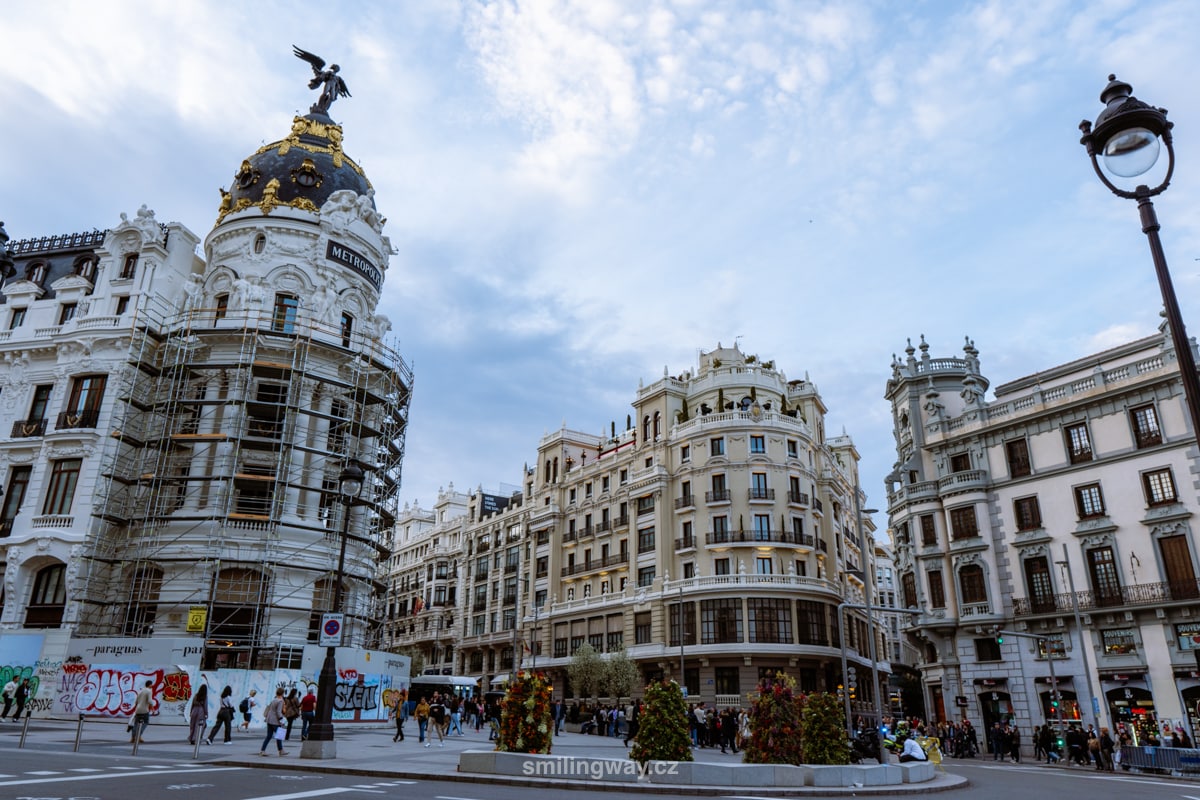
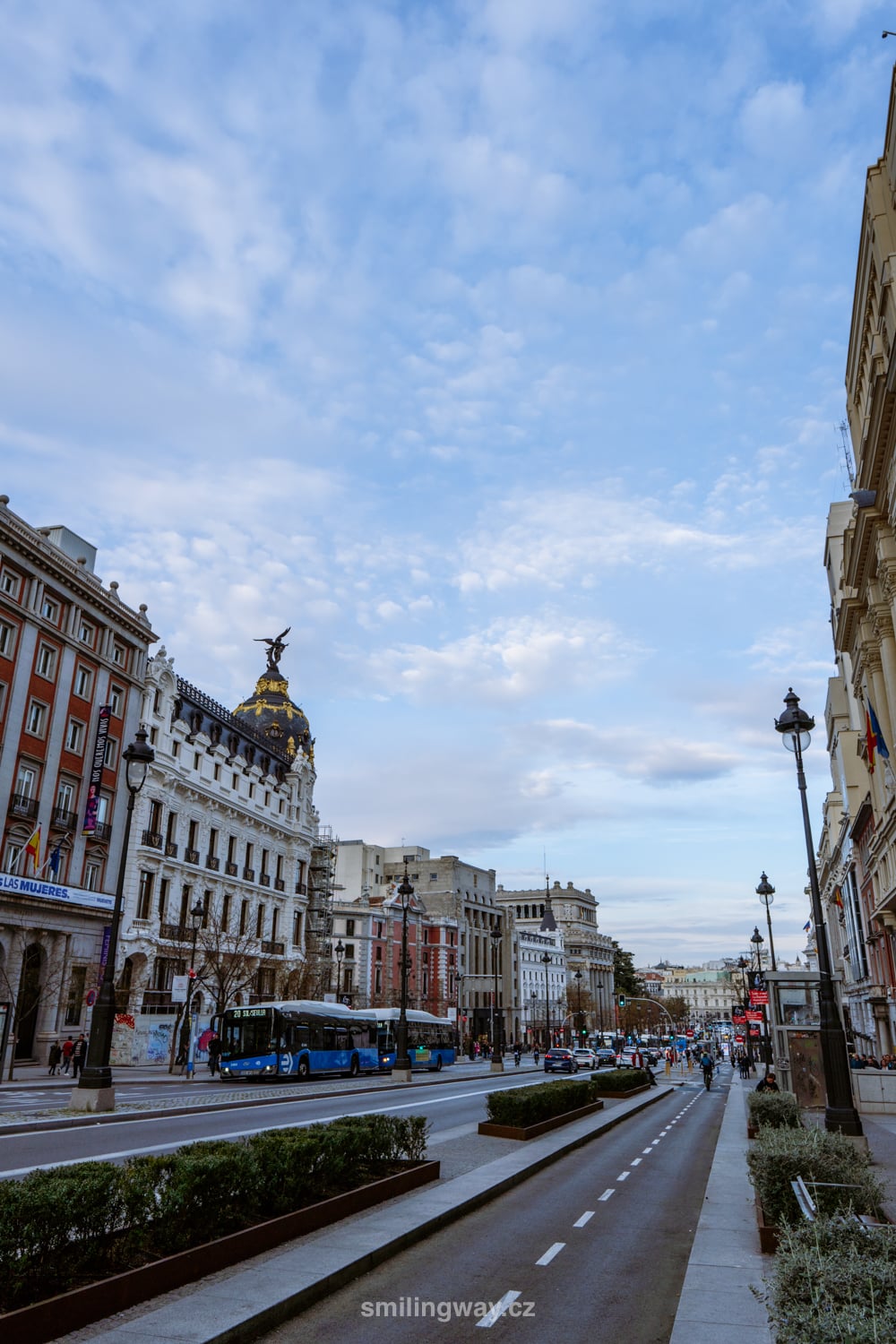
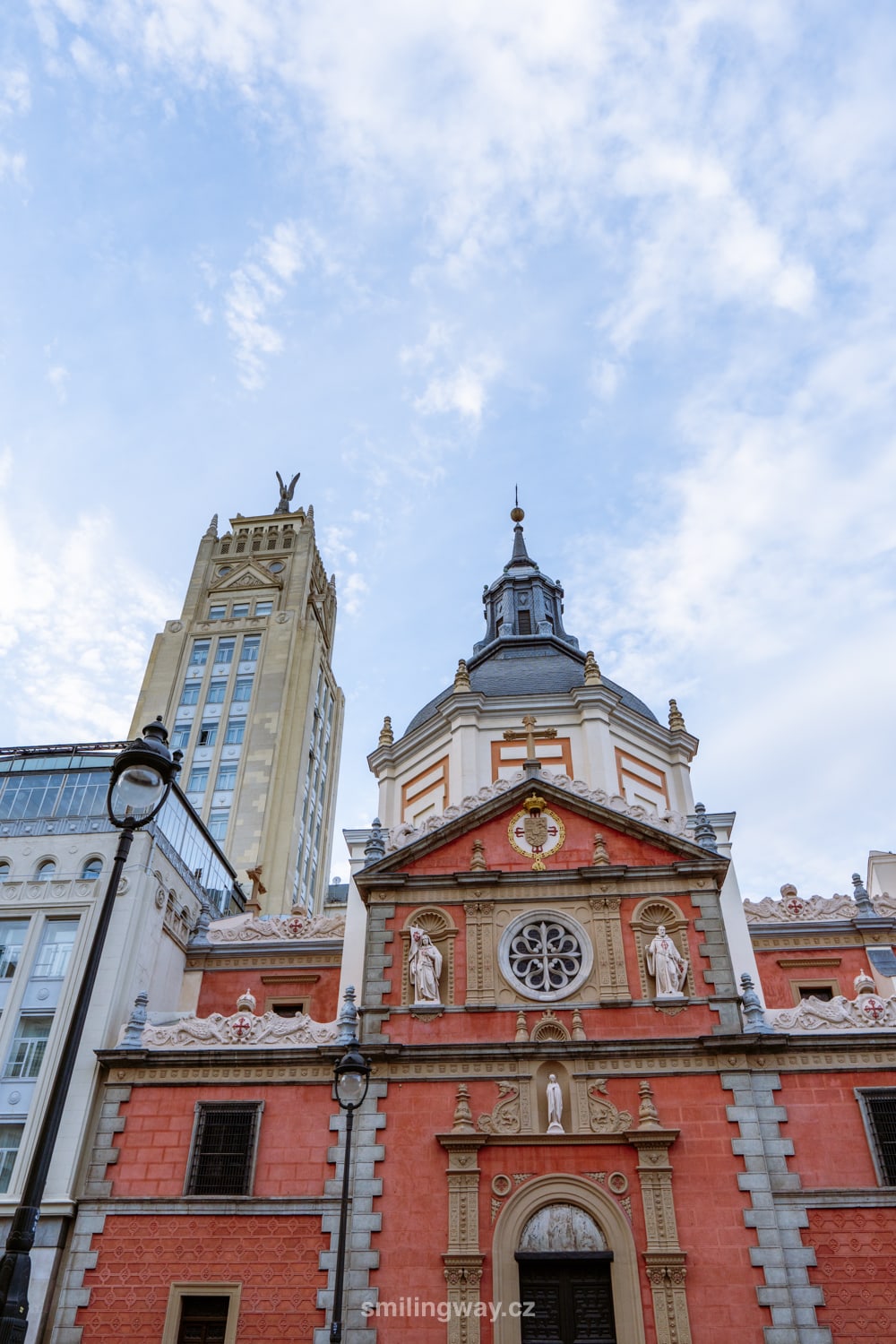
Plaza de España
In about half an hour, without stopping, we reach Plaza de España, one of the most important and largest squares in Madrid. It is lined with Art Deco buildings, including the iconic RIU Hotel. There are restaurants, shops, benches, a children’s playground and a monument to Cervantes in the middle.

Debod Temple
It’s late afternoon and high time to head to the Debod Temple, the last attraction of our first day in Madrid.
The Debod Temple is just a few minutes from Plaza de España – signs at the bottom of the square will point you in the right direction.
The Temple of Debod was built in Egypt as early as 2nd century BC. It came to Madrid in 1968 as a thank you to the Egyptian government for helping to save Egyptian monuments due to the rising waters of the Aswan Dam.
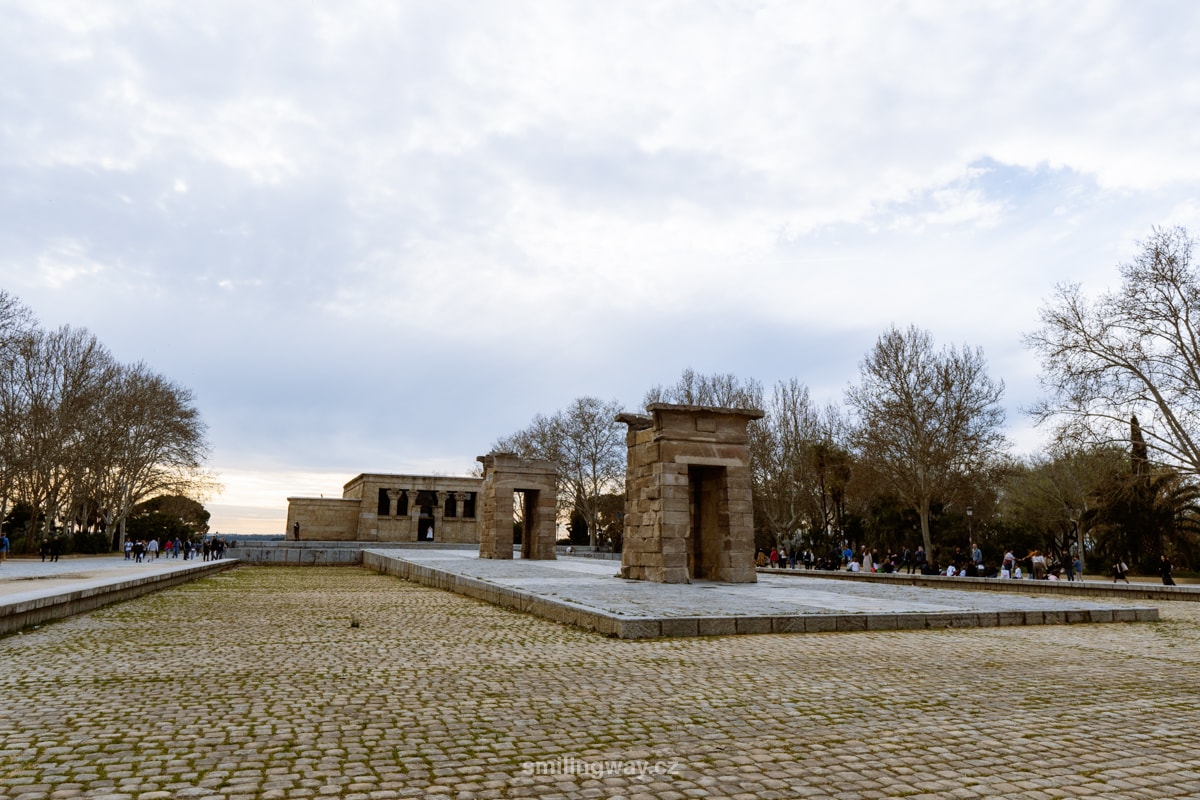
In the season, the water around the temple is filled with water, in which the monument reflects beautifully, especially at sunset. Guests can unroll a blanket on the grass or enjoy views of the city. The perfect place to end the day.
Malasaña and Chueca
Looking for a place to go for good food and drink in the area? Try the student neighbourhood of Malasaña or the adjacent neighbourhood of Chueca, known for its bars and LGBT community. Both neighbourhoods line Gran Vía and offer plenty of places to eat, from diverse markets to authentic restaurants.
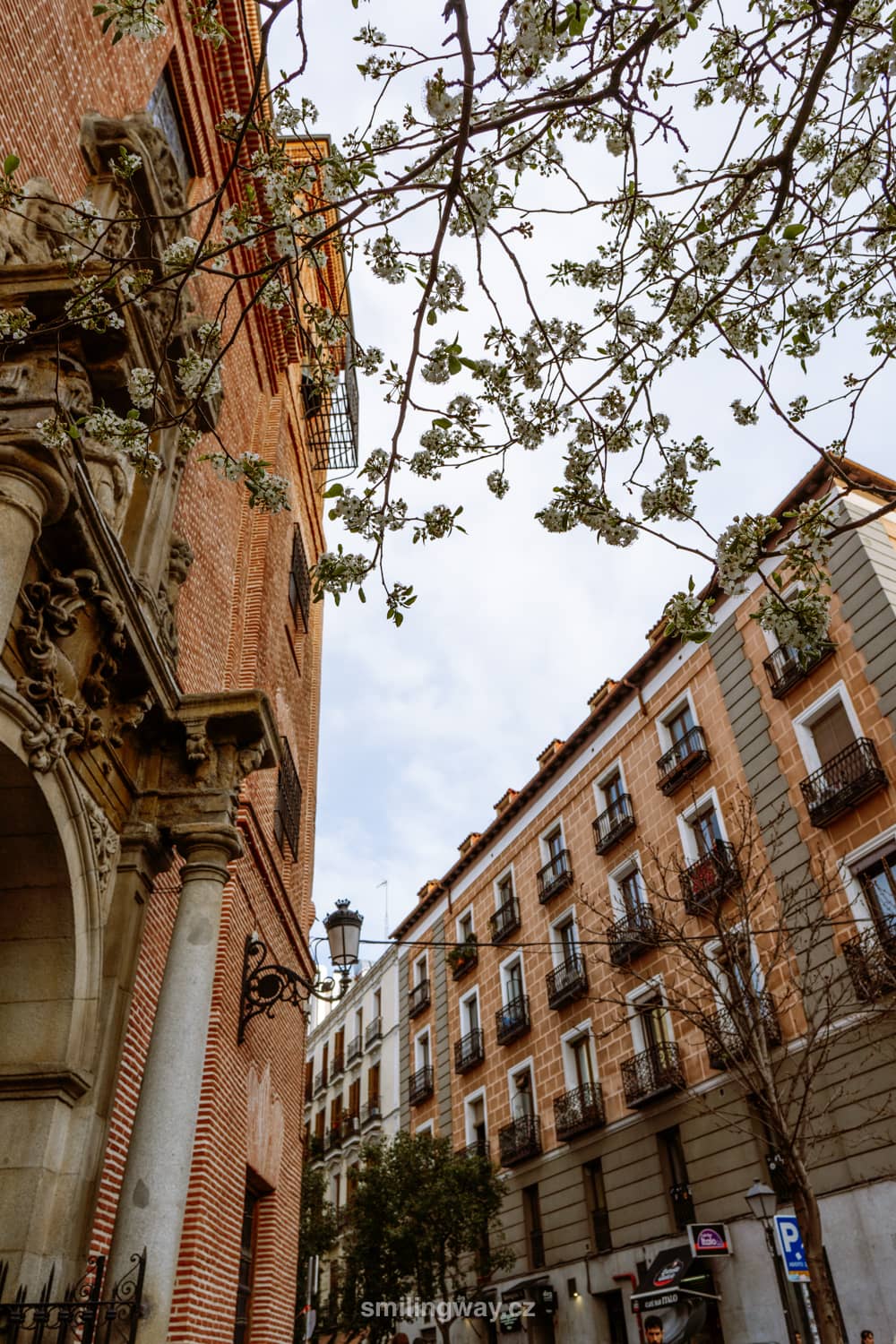
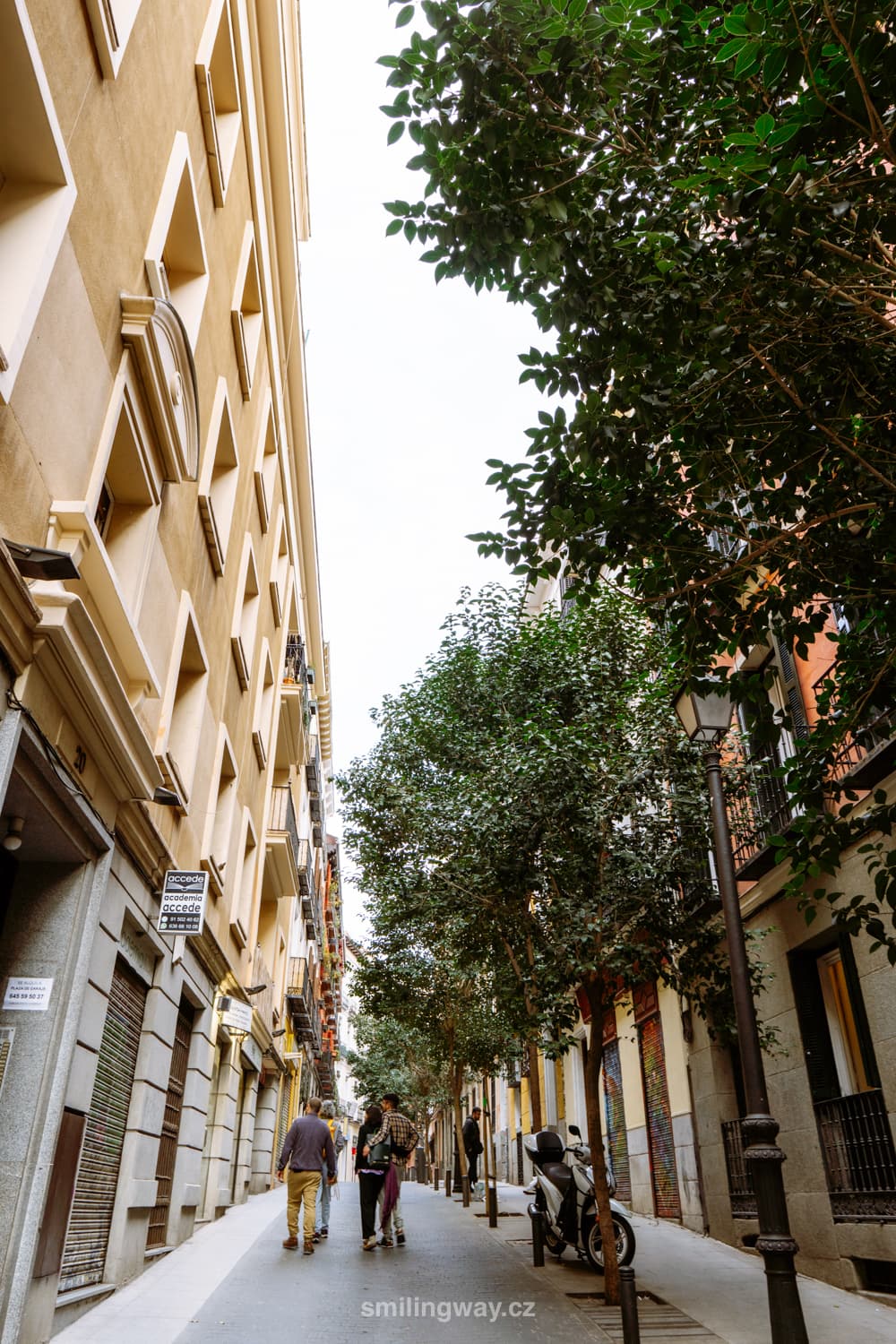
WHAT TO SEE IN MADRID IN 3 DAYS
THREE DAYS IN MADRID – ITINERARY FOR 2ND DAY
- Royal Palace
- Cathedral of Our Lady of Almudena
- Sabatini Gardens and Campo del Moro
- La Latina
- Santiago Bernabéu Stadium
Royal Palace in Madrid
On the second day, we start our visit at Plaza de Oriente, a square with statues, benches and mature trees, where you can get a closer look at the Royal Palace of Madrid.
It is the largest royal palace in Western Europe and one of the largest in the world. It’s even grander than Versailles in Paris.
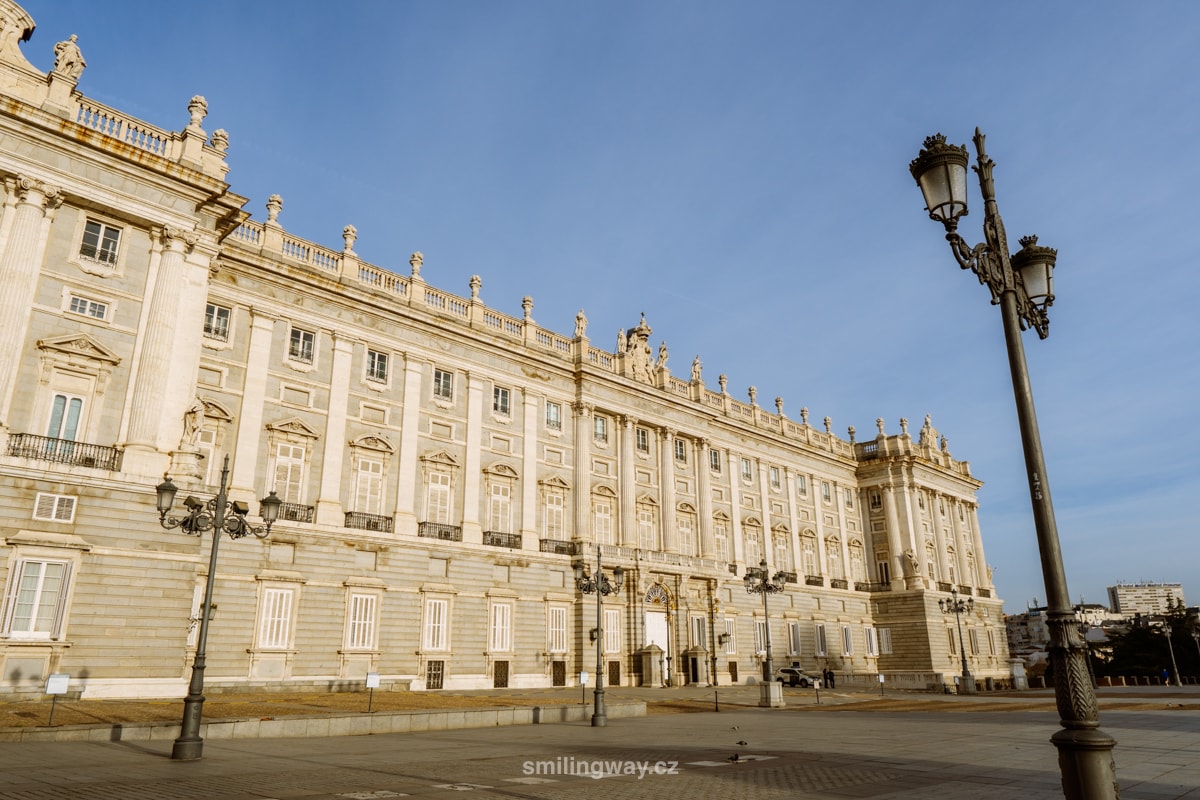
The palace is already beautiful from the outside thanks to its baroque façade. But the best is inside, including Italian frescoes, French tapestries, Spanish porcelain and important works by Goya, Caravaggio and Velázquez. The interiors are majestic, richly decorated and gilded, with lots of antiques and jewels.
In addition to its magnificent interior, the Royal Palace houses the largest collection of Stradivarius musical instruments in the world. Across the courtyard lies the armoury with weapons belonging to various Spanish kings (one of the best collections in the world).
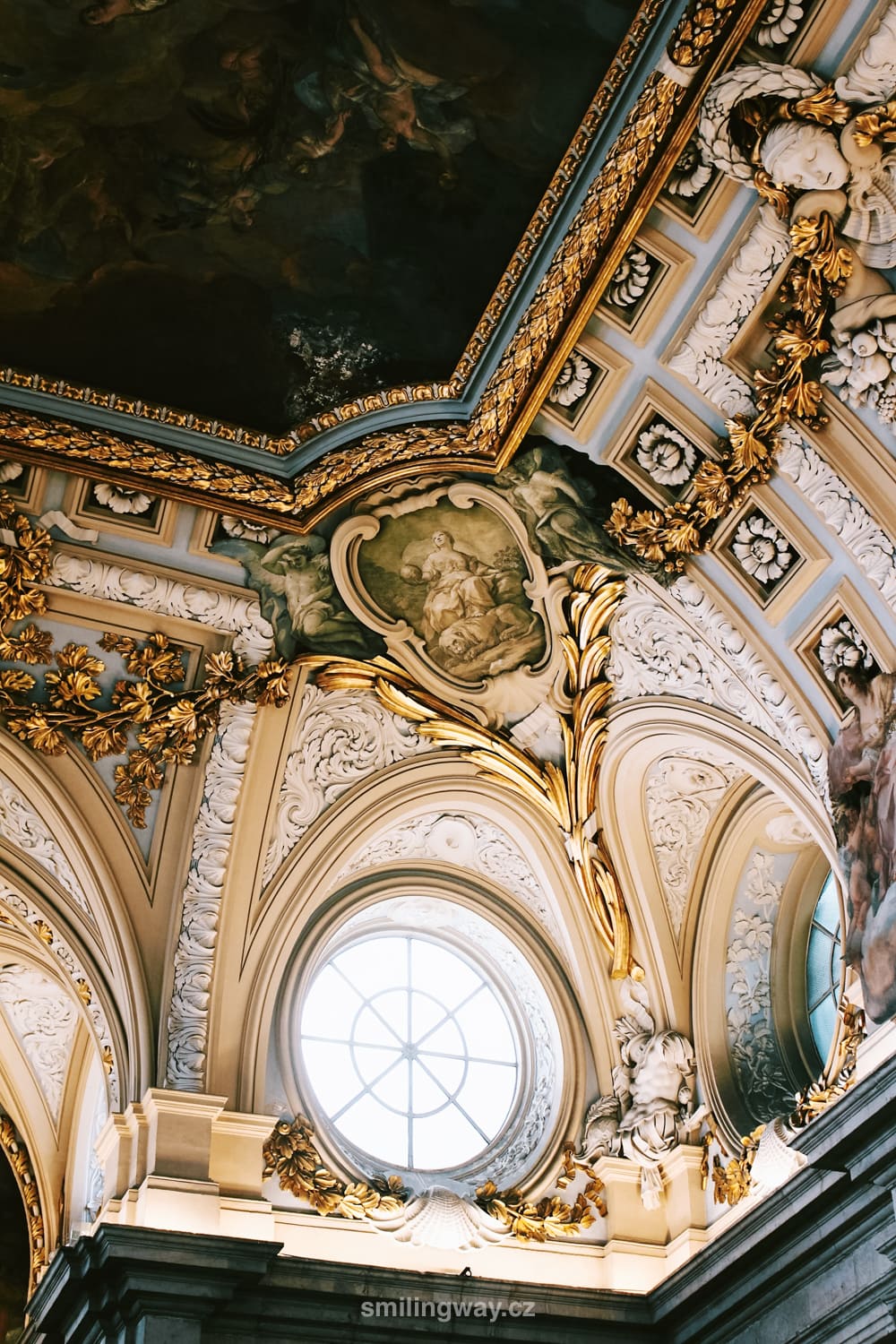
The tour also includes the royal pharmacy with hundreds of medicine bottles, ornate cabinets and a faithful recreation of a laboratory.
If you would like to see the changing of the guard, you can find details on the official website.
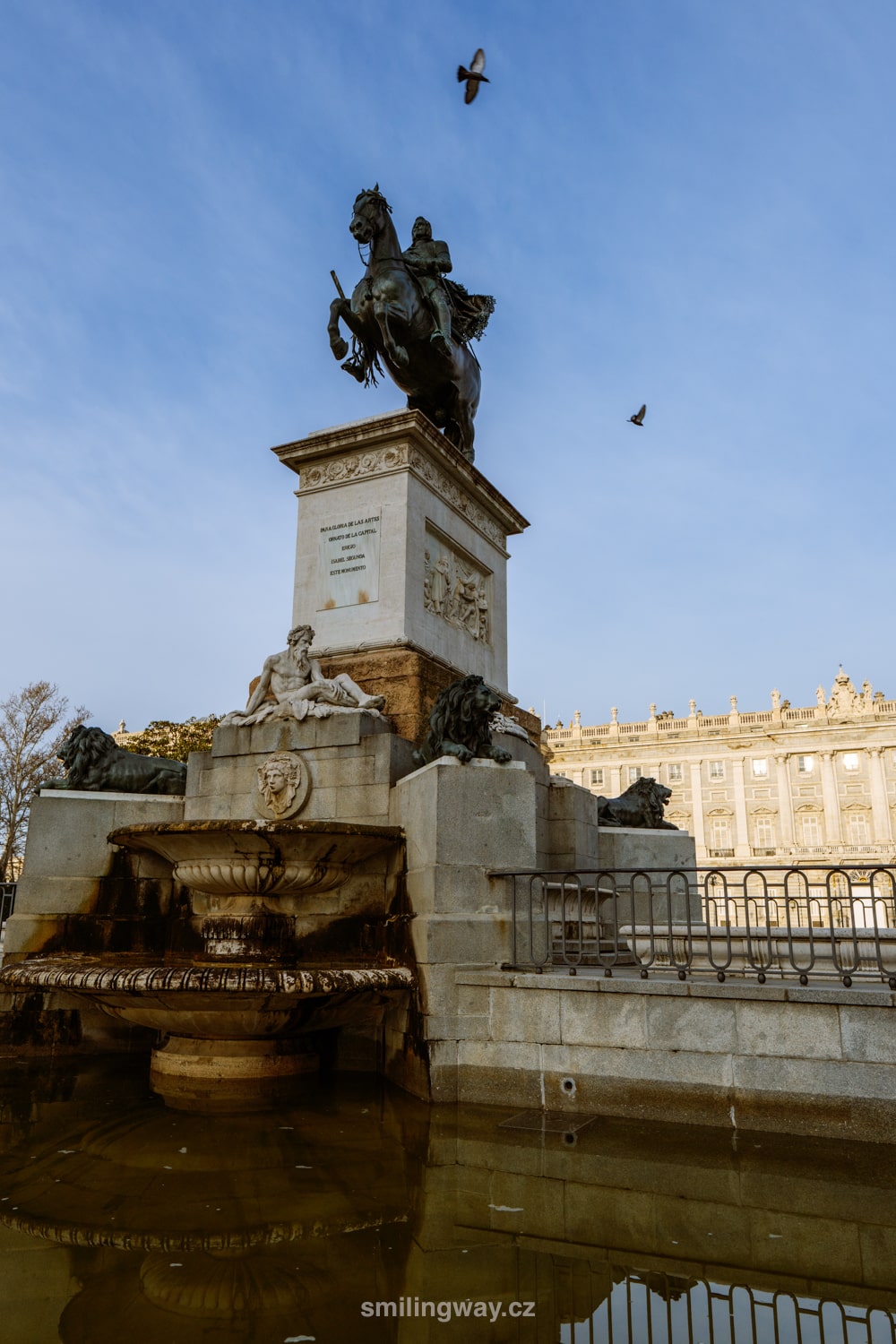
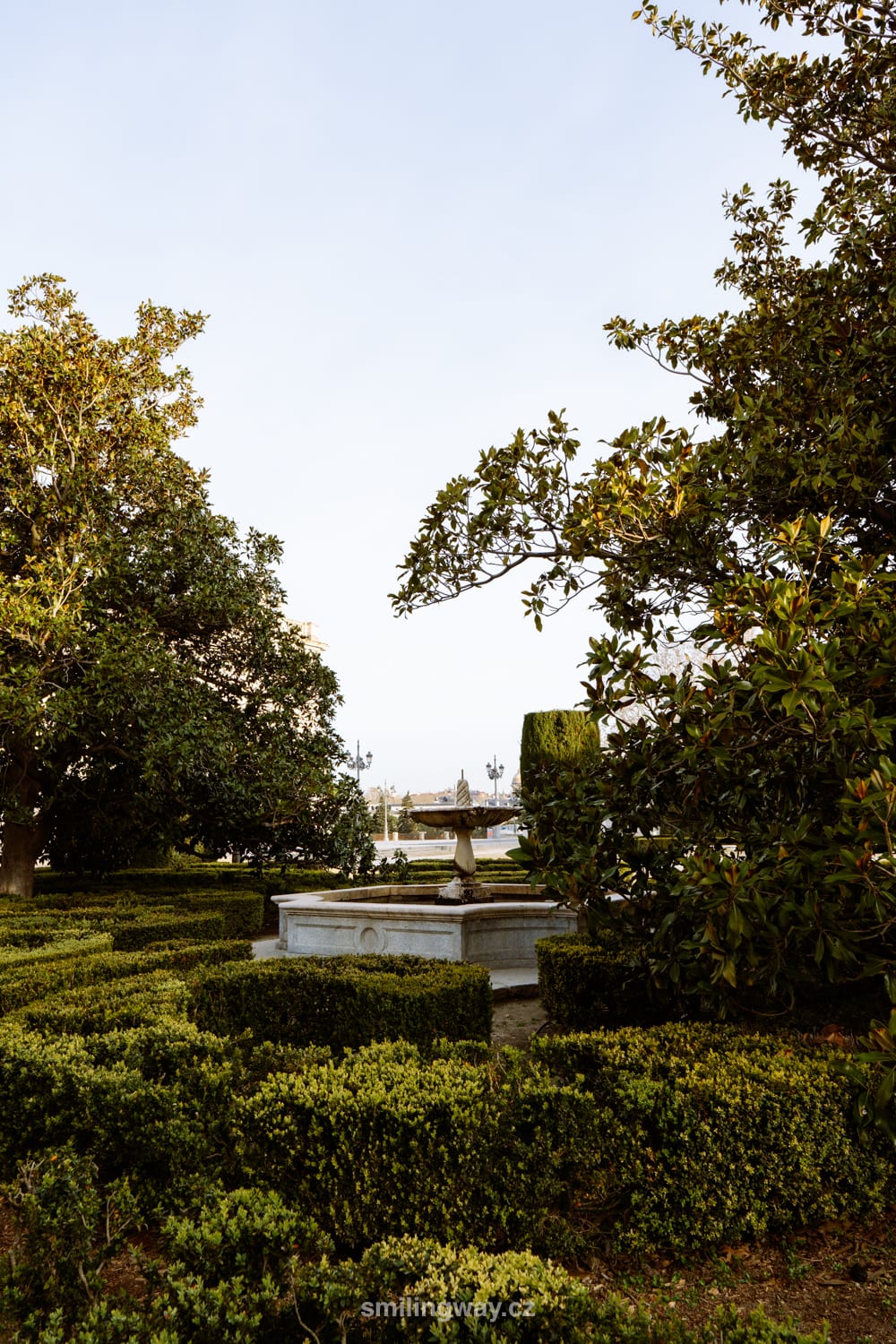
Admission and opening hours of the Royal Palace of Madrid
The palace is open daily at the following times – Monday to Saturday 10:00-18:00, Sunday 10:00-16:00 (last entry always one hour before). Free admission for all Monday to Thursday from 16:00-18:00 – depending on the time, there may be long queues to get in.
Full admission to the Royal Palace is €14 and reduced admission is €7 for children aged 5-16, students under 25 and seniors over 65. Children up to 5 years of age and disabled persons are admitted free of charge. Tickets can sell out up to a week in advance – it’s best to book in advance (see below).
The entrance to the palace is on the corner of Plaza de la Armería – take a left from Plaza de Oriente (you will also be directed by signs).
How to skip the lines at the Royal Palace: Arrive at opening time – the palace is one of the most popular sights in Madrid and the lines inside can be long. At the same time, book your ticket in advance, as they tend to sell out days in advance.
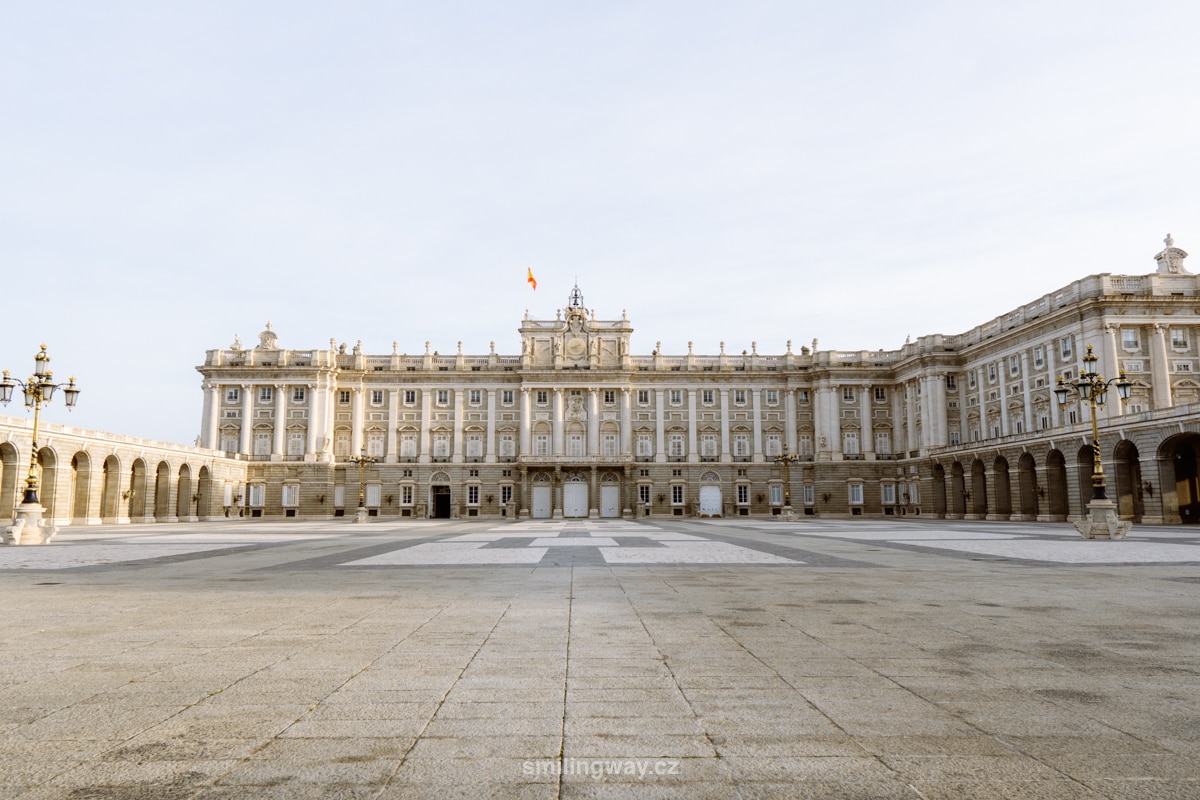
Cathedral of Our Lady of Almudena
Once you arrive at Plaza de la Armería, you’ll experience one of the most beautiful views in all of Madrid. The open square is flanked by the imposing Cathedral of Our Lady of Almuden on one side and the Royal Palace on the other.

The Cathedral of Our Lady of Almudena is one of the largest cathedrals in the world – it took more than a century to build. It also has one first – on 15 June 1993 it was consecrated by Pope John Paul II and thus became the first cathedral consecrated outside Rome.
The main entrance is on the side of the cathedral. Inside you can see the playful ceiling full of vivid colours, the altarpiece from the 15th century and a huge organ with 5,000 pipes.
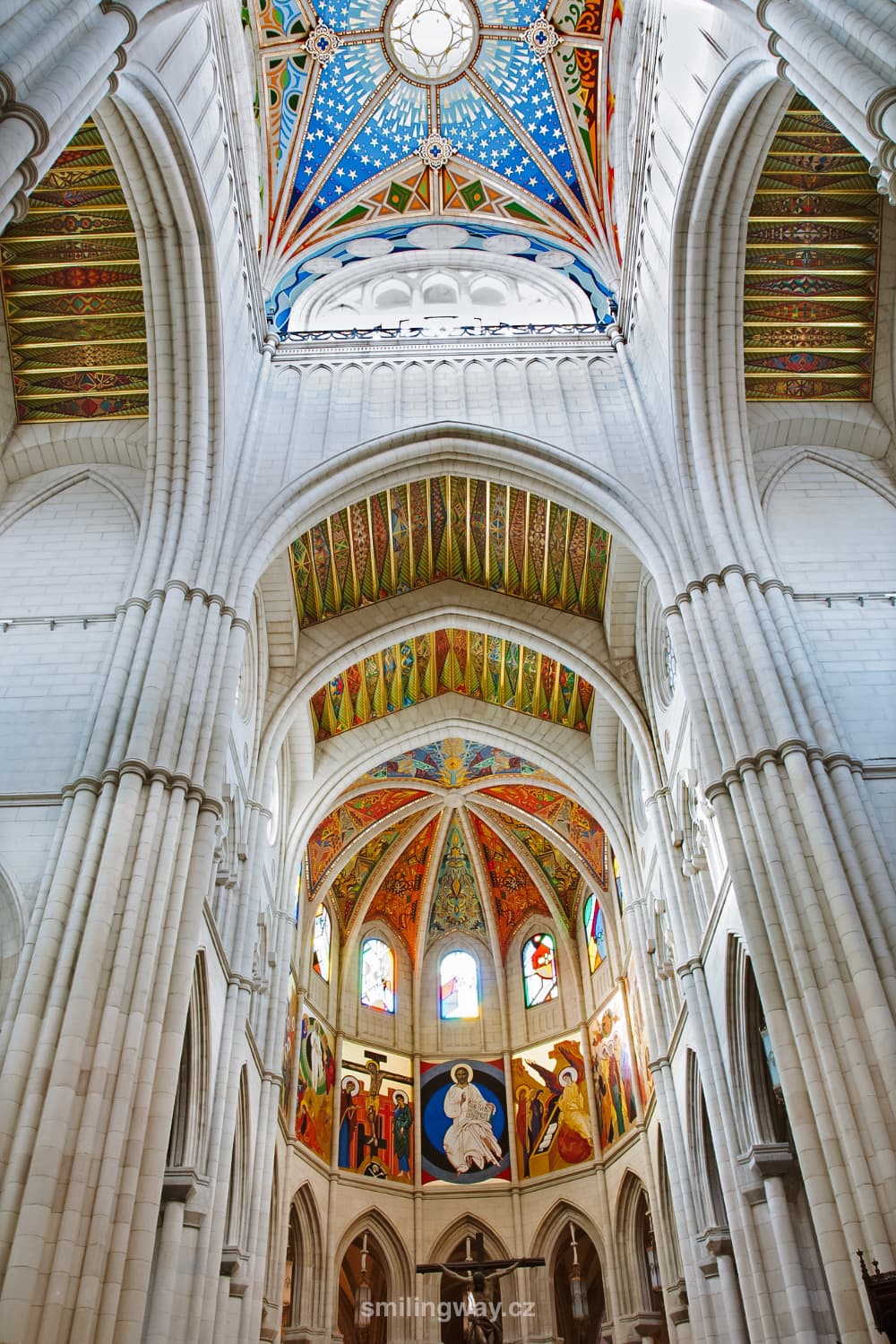
Entrance to the cathedral is free, but a donation of at least €1 is recommended. It is open daily from 10:00-20:00, in July and August until 21:00.
For a fee of €7 (reduced €5 for selected groups) you can also visit the museum and enjoy the view from the dome.
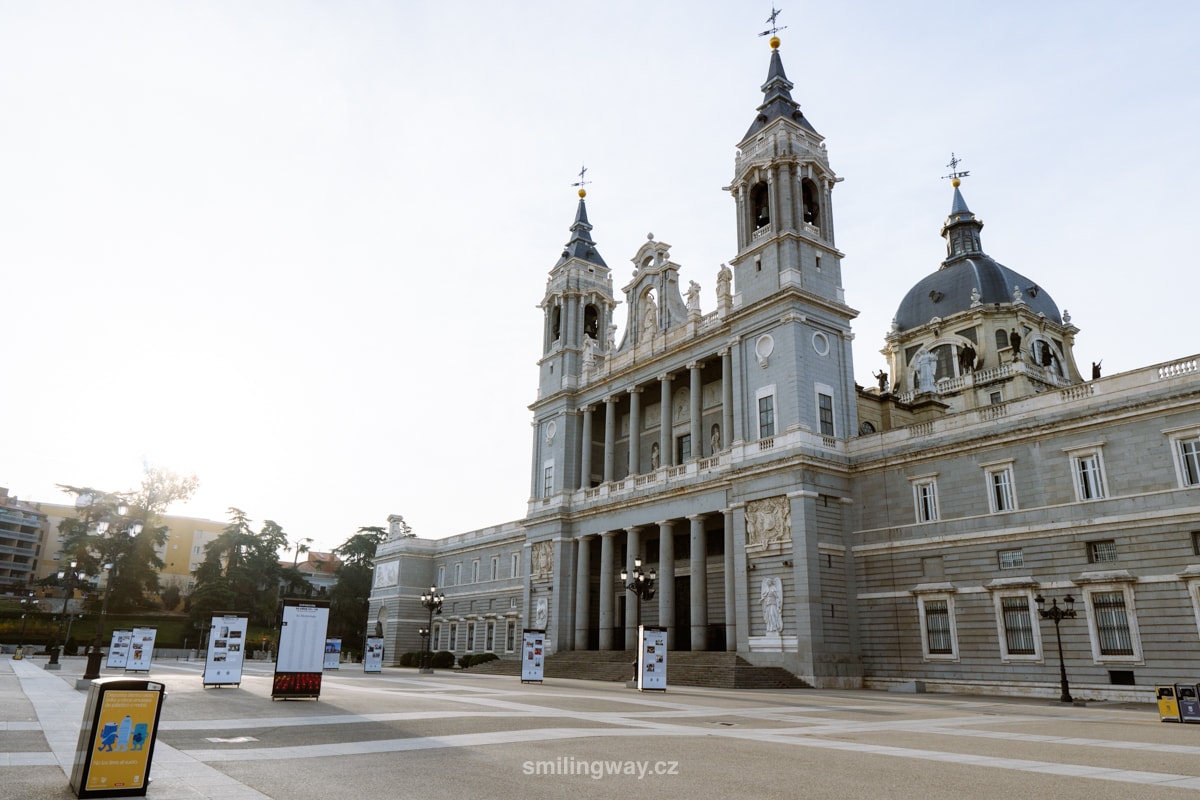
Sabatini Gardens
On the right side of the Royal Palace from Plaza de Oriente is the entrance to the Sabatini Gardens, adjacent to the Royal Palace. They are not large, but still provide magnificent views of the palace and shady places to relax in the summer.
Entrance to the gardens is free. The second entrance is from Cta. San Vicente (there is also a self-service lift).
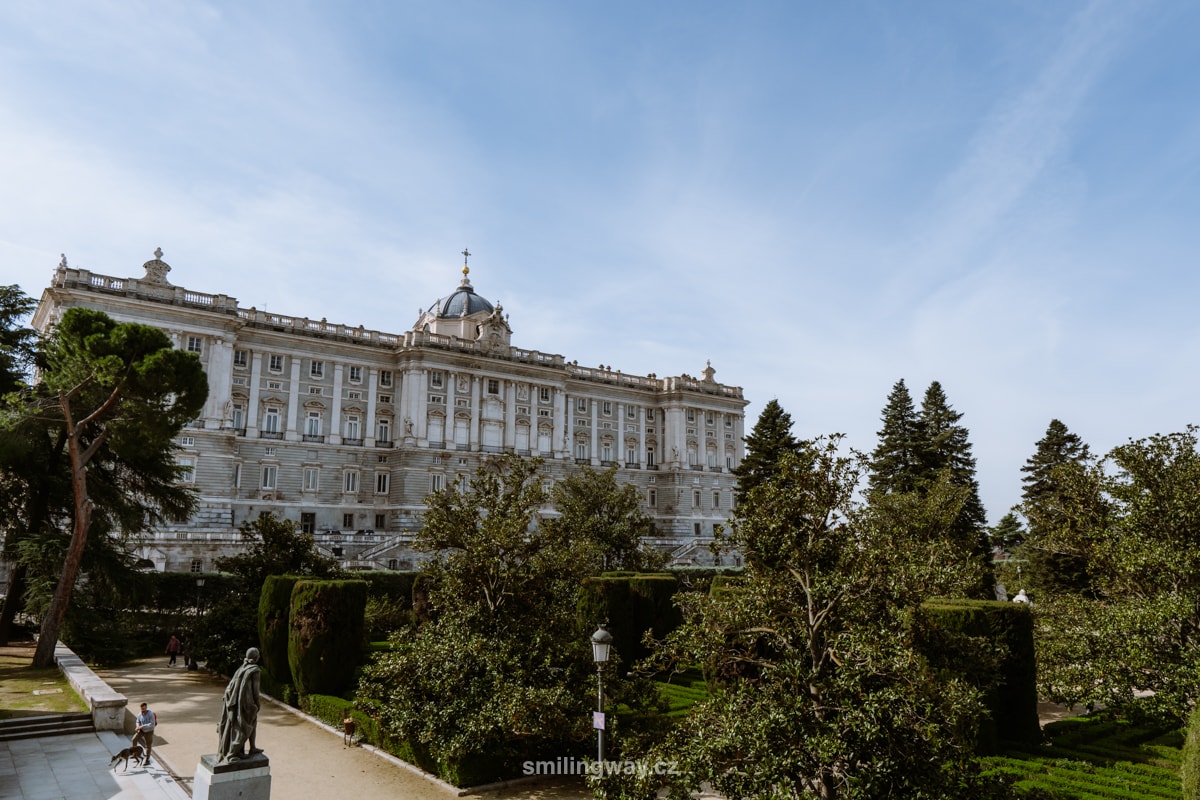
Campo del Moro
Campo del Moro is a park on the hillside below the Royal Palace. It is easy to get here via the Sabatini Gardens – take the lift down from the gardens and walk a few metres down the hill to the park entrance.
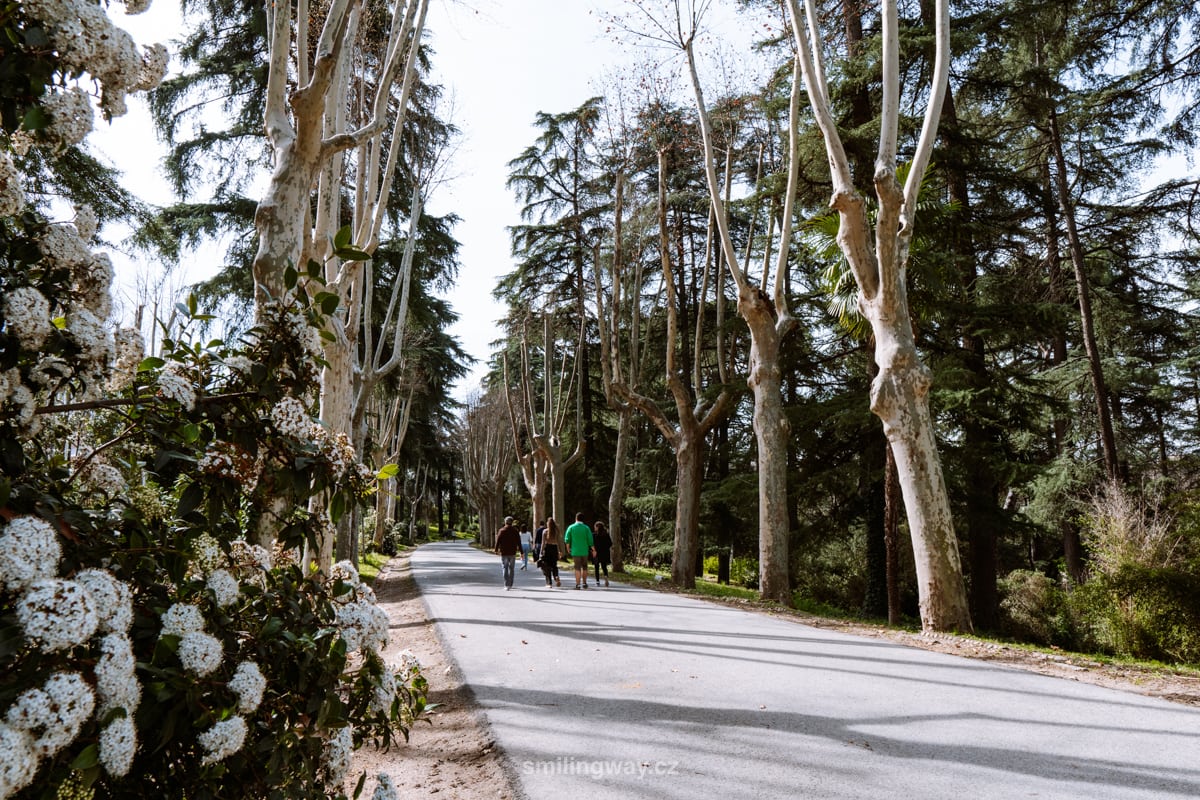
The park is the perfect place to relax after visiting the Royal Palace and the Cathedral. There are benches, shady spots and beautiful views of the palace. You can walk through the whole park and come out on the other side under the Cathedral of Our Lady of Almuden.
Open daily 10:00-20:00, off-season 10:00-18:00.

La Latina
La Latina is one of the best neighbourhoods in Madrid for great food. Moreover, it is located just a few minutes from the Royal Palace.
The streets are narrow, with open squares lined with gardens and trees providing shade in the hot summer. At lunchtime and into the evening, La Latina can get very busy – especially on the main street, Calle de la Cava Baja.
I recommend a walk around Plaza Paja with its community garden – there’s a church and charming streets leading off the square.
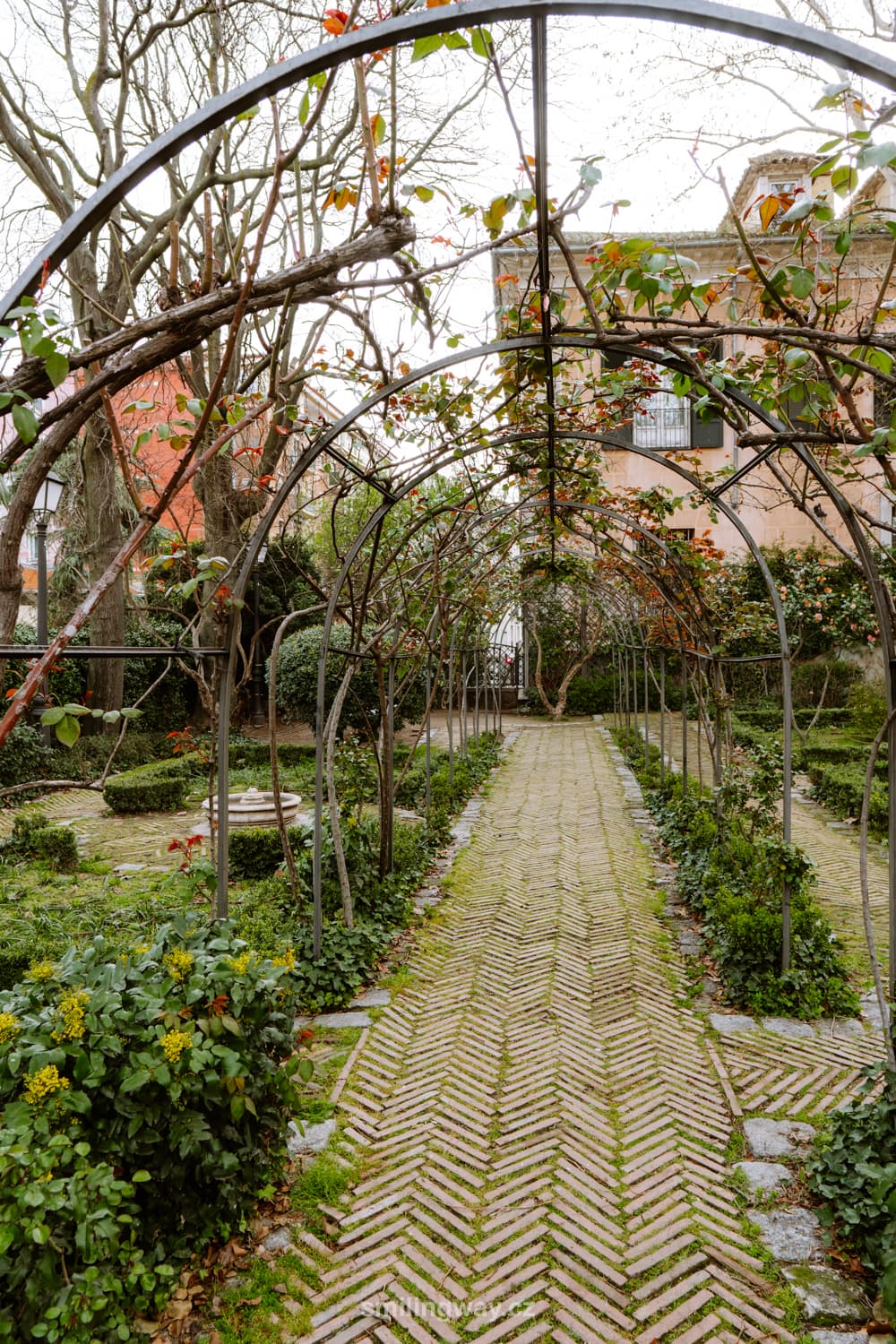
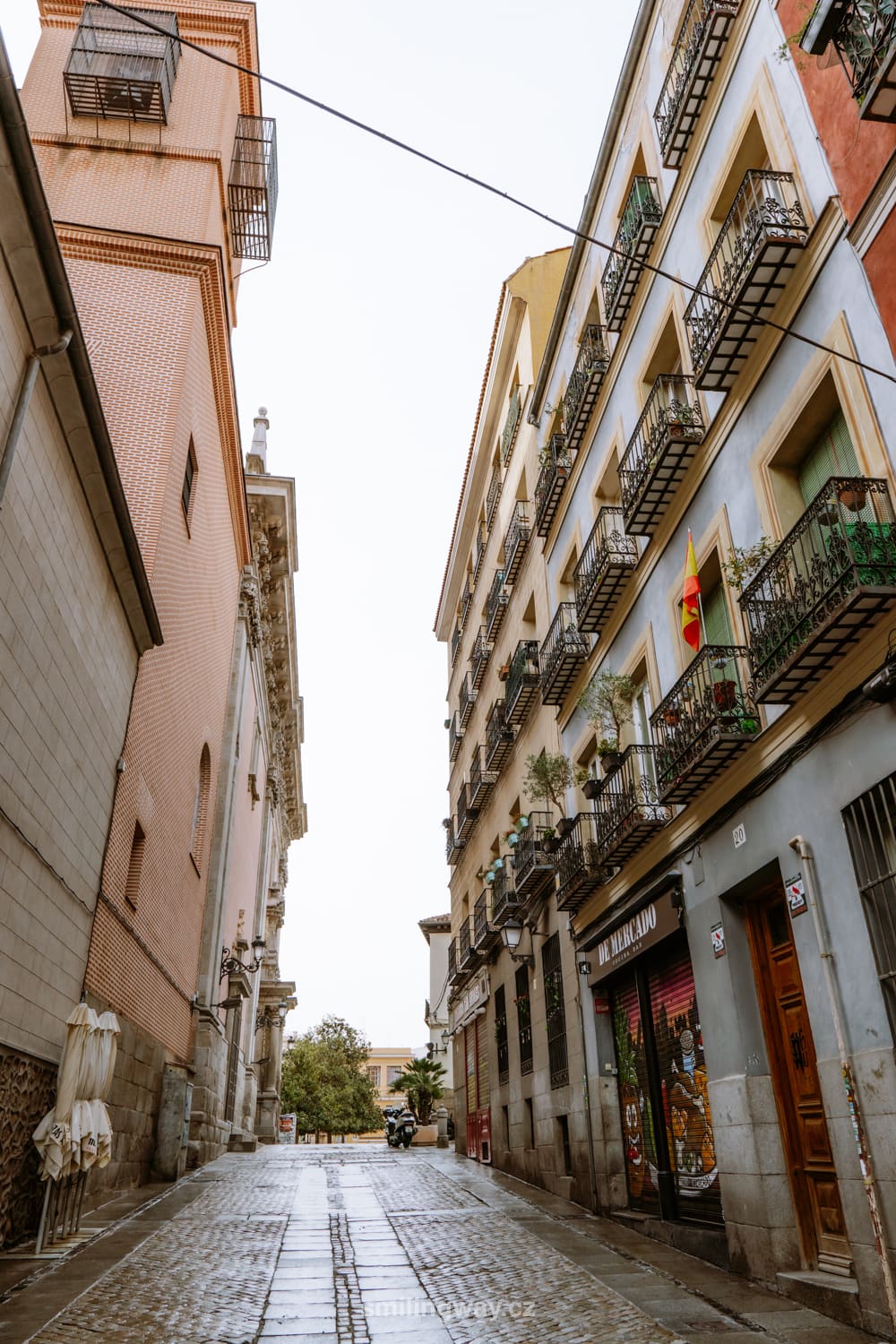
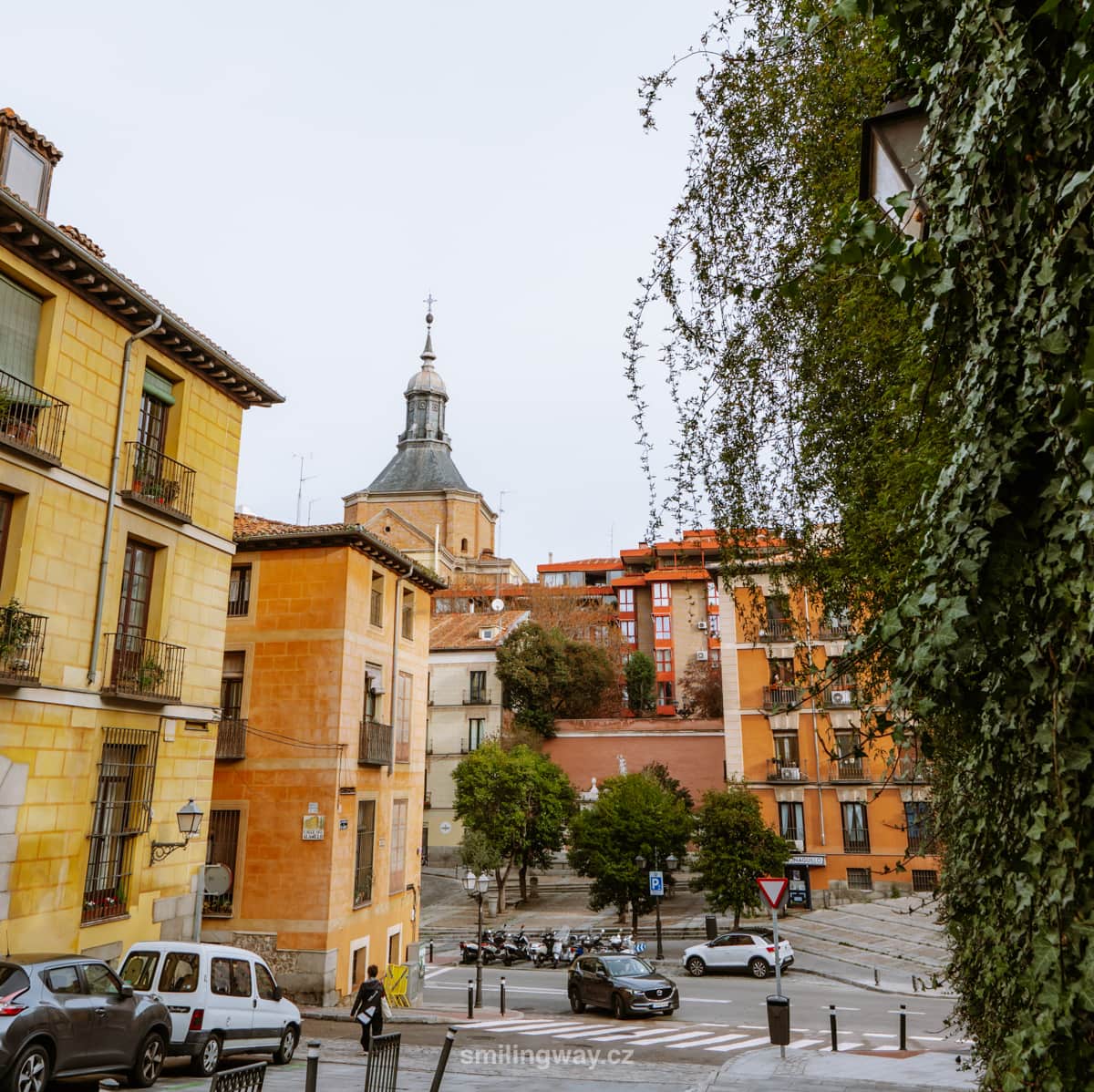
Santiago Bernabéu Stadium
A visit to the Santiago Bernabéu stadium is an experience not only for Real Madrid fans.
Real Madrid is a 15-time Champions League winner and the most successful team in European football. The stadium itself is one of the largest stadiums in the world, holding up to 80,000 people.
Santiago Bernabéu Stadium can be visited as part of Real Madrid match or on a tour, where you can visit the local museum and take a peek behind the scenes. Tickets for the stadium tour can be purchased in advance.
The stadium is located outside the centre of Madrid. You can get here in about half an hour by metro or bus. Santiago Bernabeu Metro Station is a few metres from the stadium.
Hotels in Madrid 😴
WHAT TO SEE IN MADRID IN 3 DAYS
3 DAYS IN MADRID – ITINERARY FOR 3RD DAY
- Golden Triangle of Art
- El Retiro Park
- Lavapiés
Golden Triangle of Art
On our third day in Madrid, we start in the Golden Triangle of Art. This includes three major art museums, located close to each other, separated by an avenue of trees. These include the Prado Museum, the Reina Sofía Museum and the Thyssen-Bornemisza Museum. We’ll take a closer look at all of them so you know what to prepare for when you visit.
Tip: All the museums are famous and there are queues to get in. For this reason, I recommend arriving right at opening time and booking your tickets in advance to avoid the long queues.
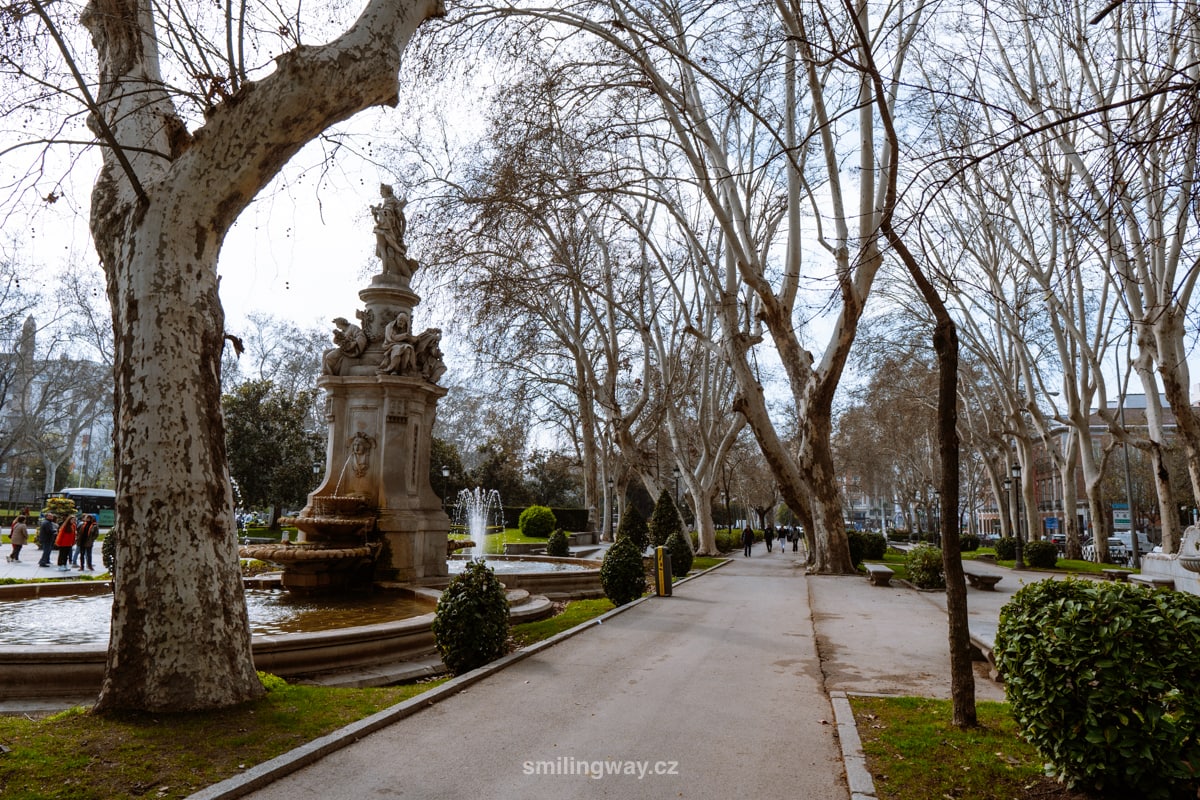
Prado Museum
The Prado Museum is one of the world’s leading art museums, with an extensive collection of 11,000 works ranging from paintings, photographs, sculptures and decorative objects to coins and medals. There is a lot to see and one visit is not enough to go through everything thoroughly.
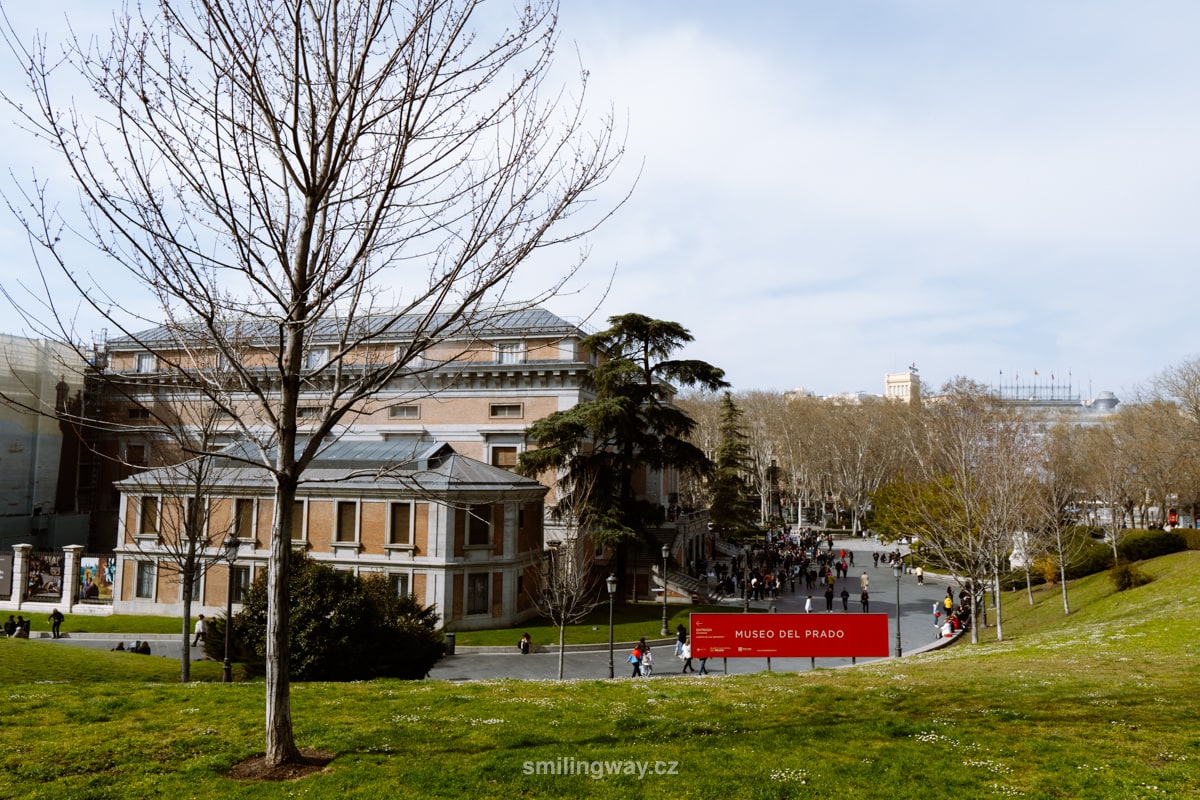
The best is the collection of European masters – from Spanish artists such as Goya and Velázquez to Italian artists including Raphael.
Note: No photography inside the museum.
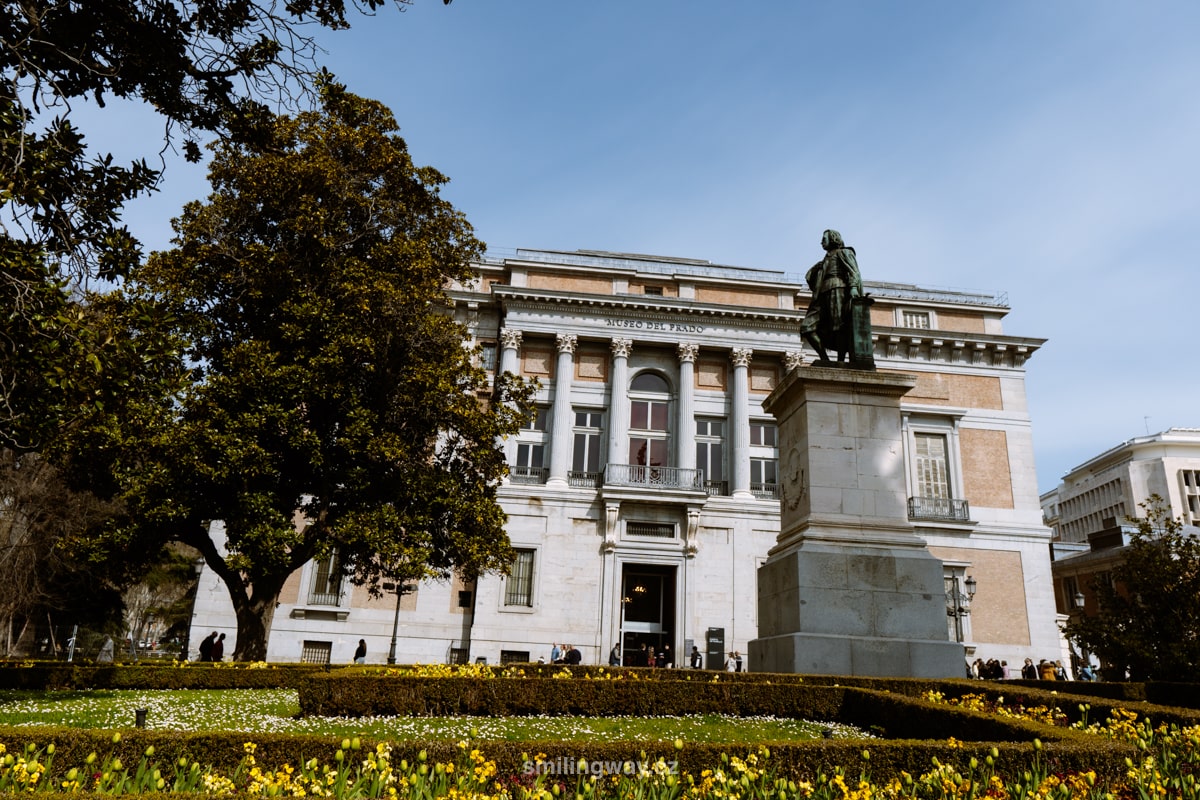
Admission and opening hours of the Prado Museum
The Prado Museum is open daily during the following hours – Monday to Saturday 10:00-20:00 and Sunday and public holidays 10:00-19:00. If you are travelling on a budget, there is always free entry 2 hours before closing time. Just be prepared for the queues to be even longer than usual, which means you won’t have as much time inside as you need to see the collection.
Admission to the Prado Museum is €15 and a reduced admission of €7.50 for seniors over 65. Children up to 18 years of age, students up to 25 years of age and persons with a Disabled Persons Card are admitted free of charge.
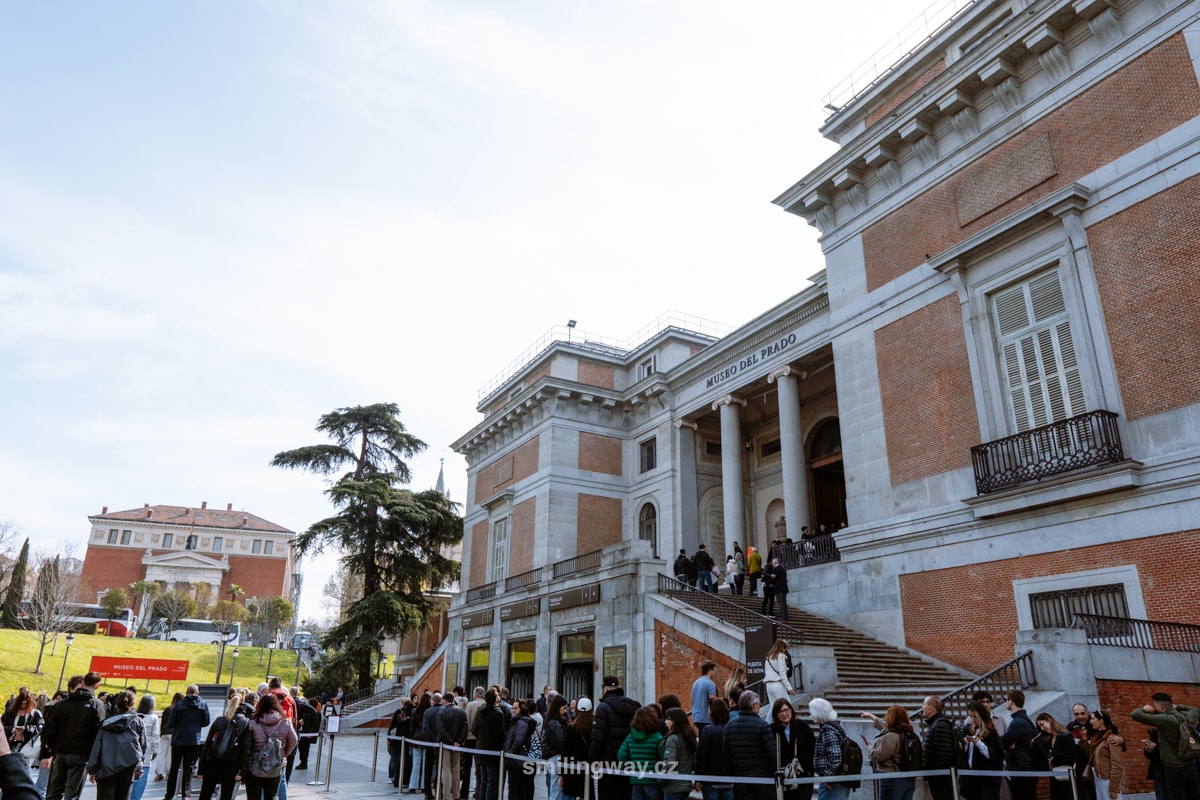
How to skip the lines at the Prado: The lines at the Prado are really long. Often there are 2 queues – first the ticket queue, which winds along the building all the way around the back corner (even in the low season in early March). Then you move on to a separate entrance with a ticket, where a security queue forms – fortunately, it passes quickly. For this reason, it is better to book tickets in advance and arrive at 10:00 or later in the afternoon.
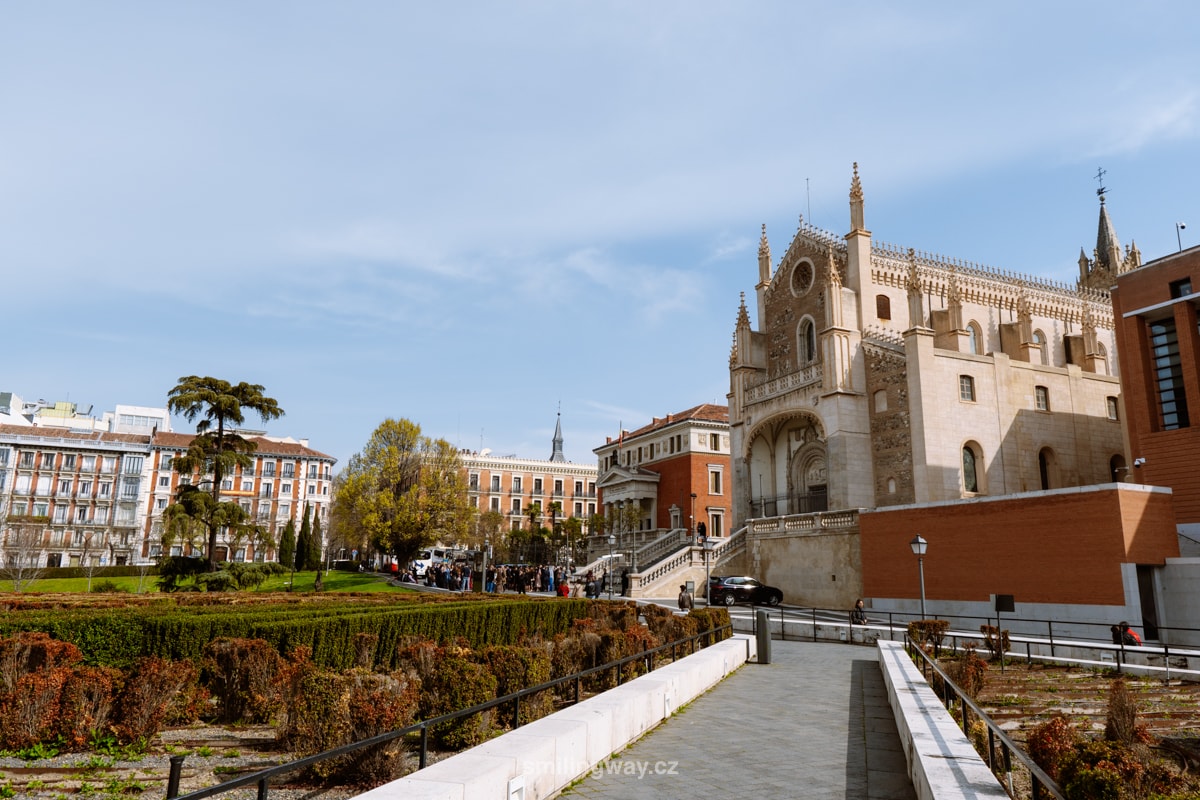
Reina Sofía Museum
The Reina Sofía Museum is Madrid’s finest contemporary art gallery, encompassing styles ranging from Cubism to Surrealism. It specializes mainly in Spanish artists (Picasso, Dalí, Miró), but you can also find artists from outside Spain (Kandinsky, Braque and others).
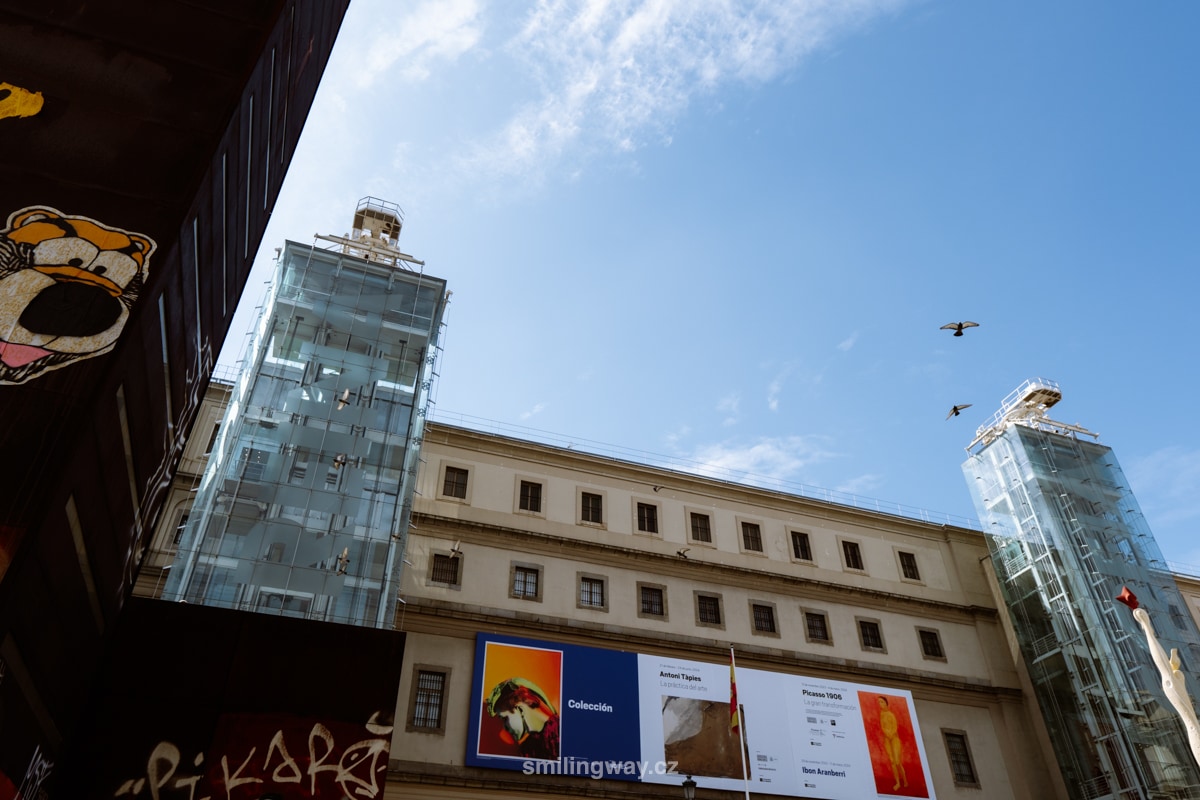
The most famous work is Guernica by Picasso, a monumental work inspired by the bombed-out city of Guernica.
A popular attraction when visiting the Reina Sofía Museum is the glass elevator ride, which gives you a great view of the adjacent square.
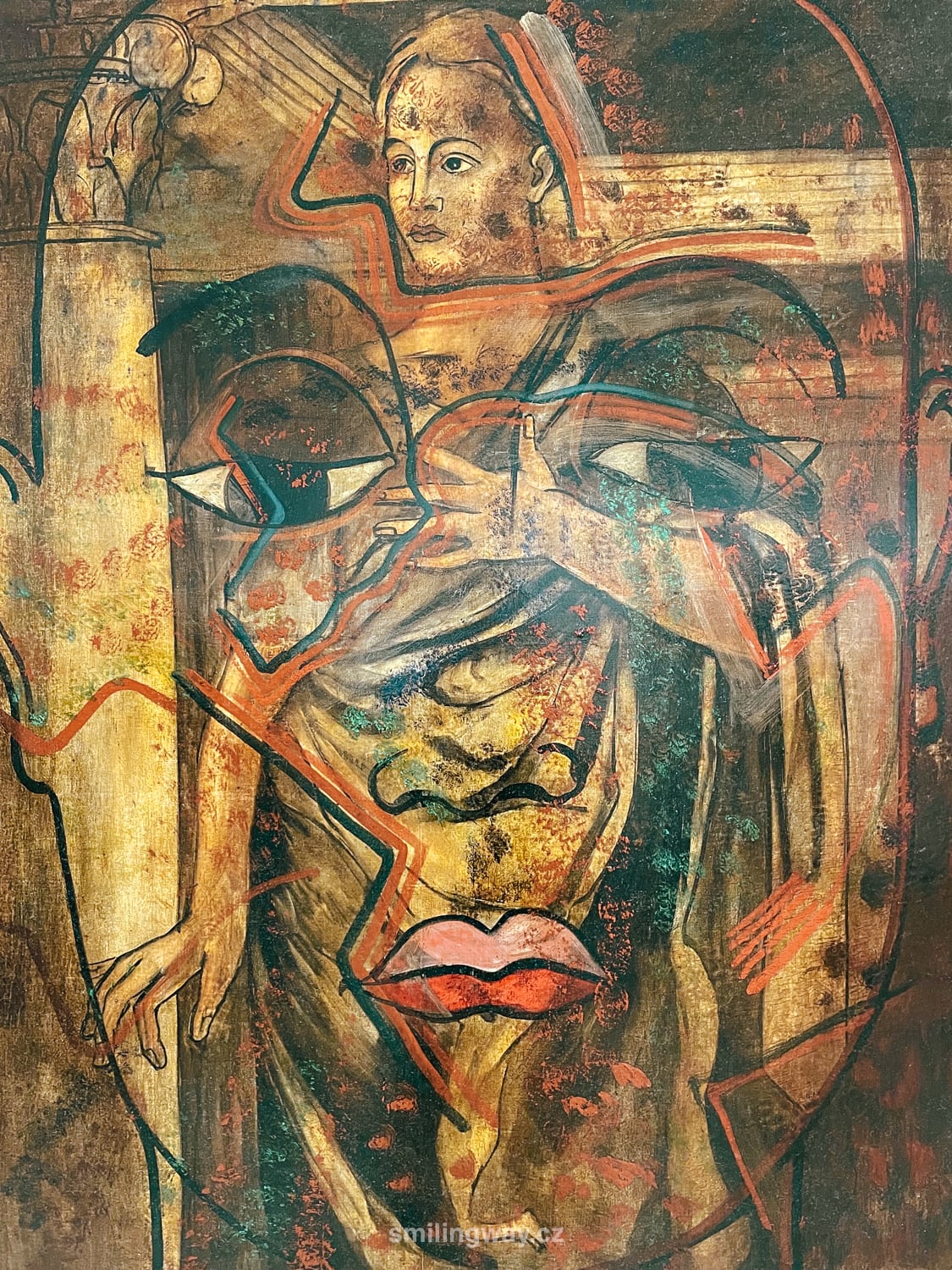
Admission and opening hours of the Reina Sofía Museum
Except for Tuesdays, the museum is open daily from 10:00-21:00 and on Sundays from 10:00-14:30.
Admission to the Reina Sofía Museum is €12, with free admission for children under 18, students under 25, seniors over 65 and disabled people. Free admission to all daily 2 hours before closing time, but be prepared for lines.
How to skip the queues for the Reina Sofía Museum: If you book tickets to the Reina Sofía Museum in advance, you go straight to the entrance – the ticket queue is on the left, the advance booking entrance is on the right.
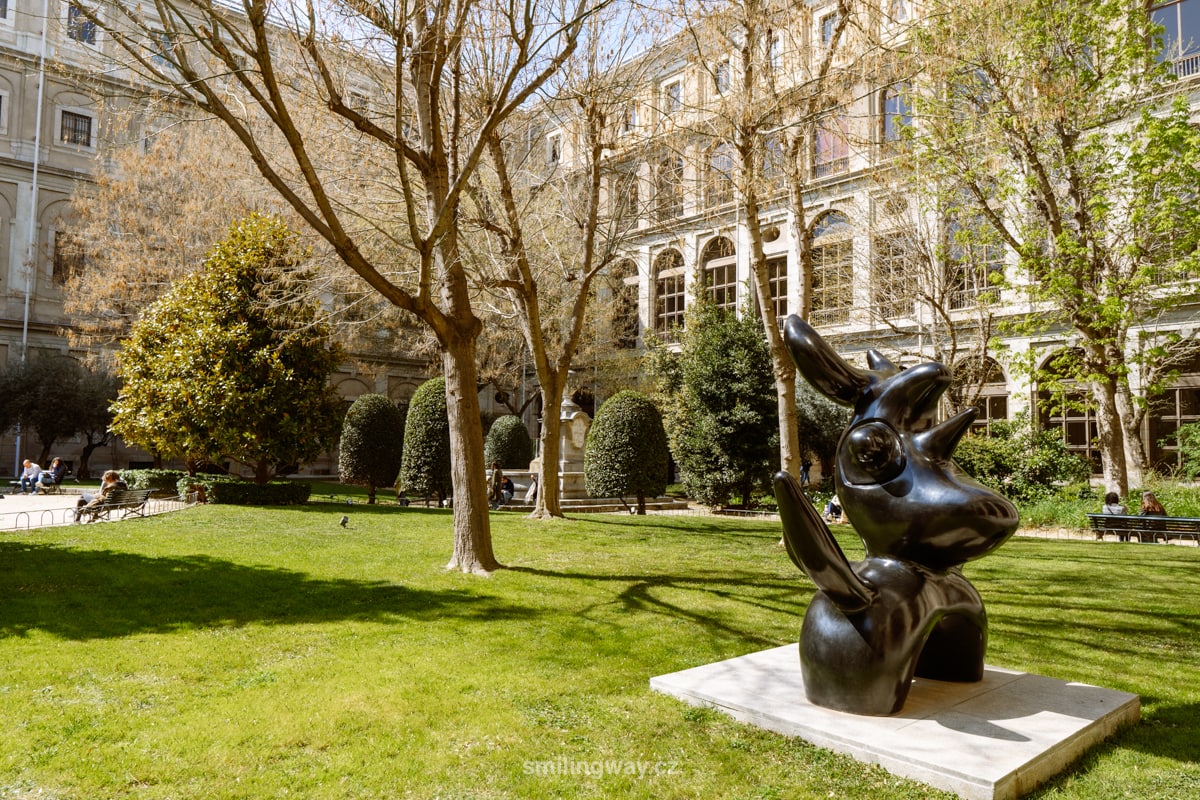
Thyssen-Bornemisza Museum
The Thyssen-Bornemisza Museum is just a short walk from the Prado Museum.
Inside the museum, you’ll find English and German school art, including Holbein and Dürer, American Abstract Expressionism, and a number of Impressionist and Post Expressionist works, including Monet, Renoir and Degas.
Admission to the Thyssen-Bornemisza Museum is €13 and reduced admission is €9 for students under 25 and seniors over 65. Children up to 18 years of age and persons with a Disabled Persons Card are admitted free of charge.
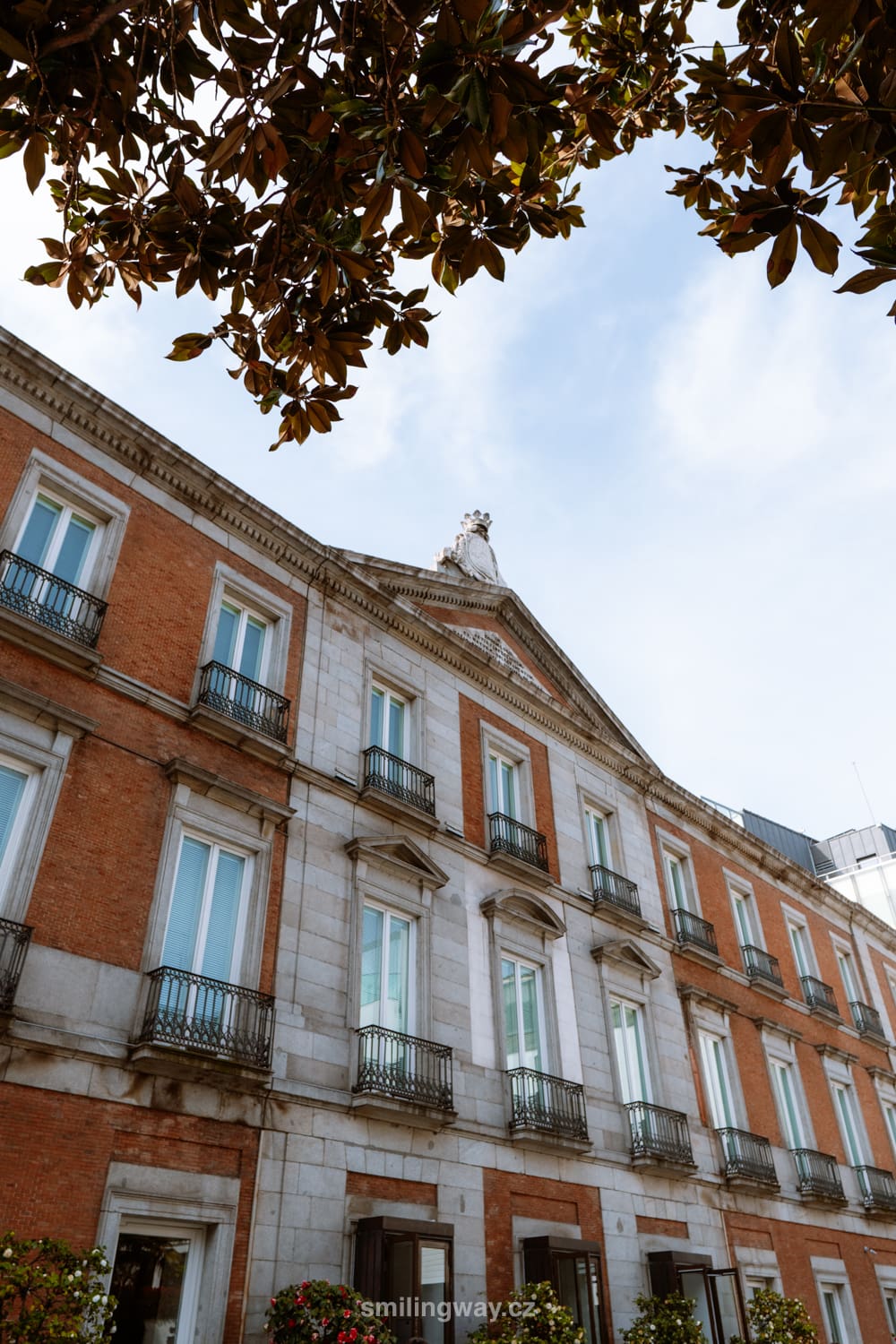
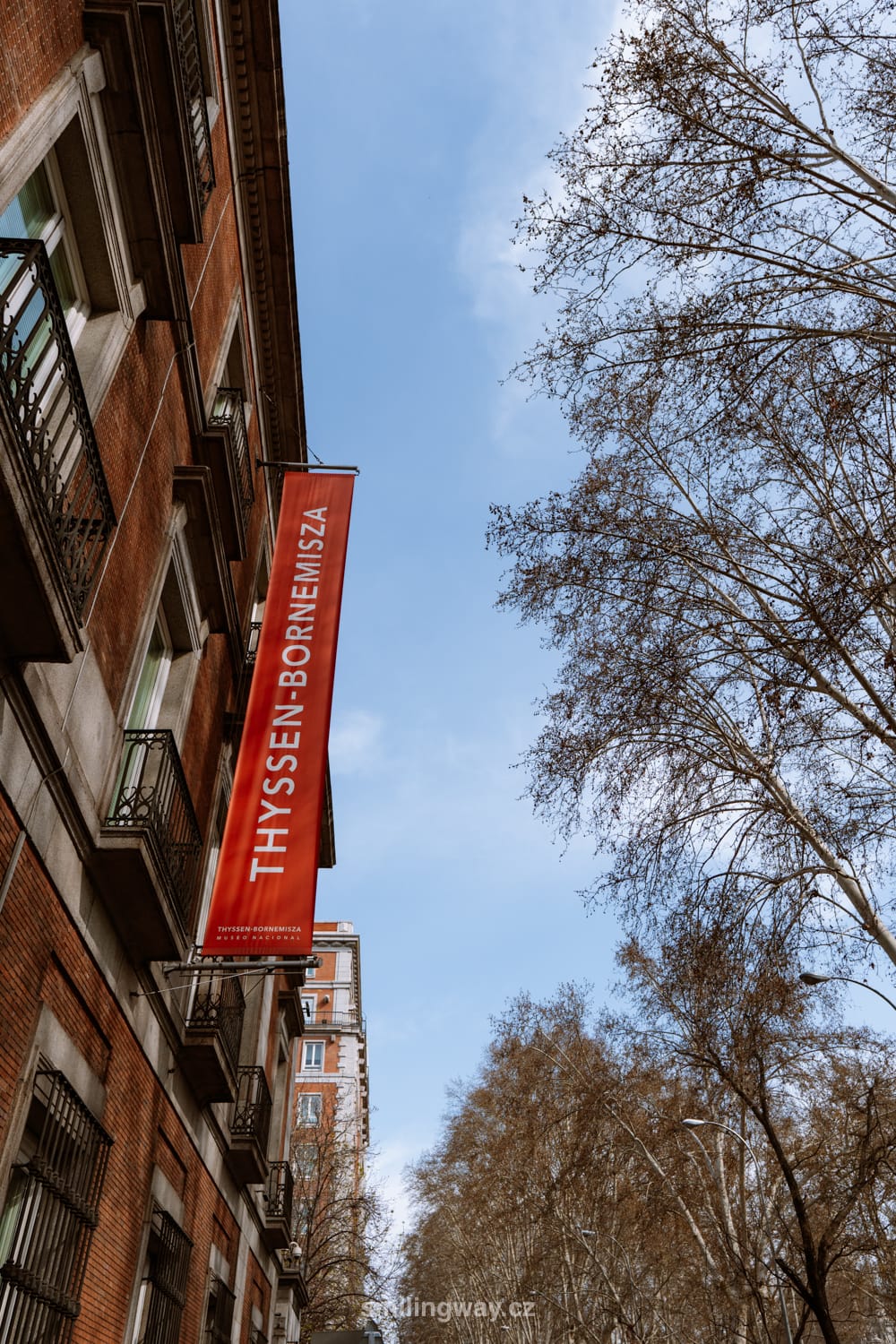
Every Monday is free for everyone. No need to book in advance – in high season it’s better to come first thing in the morning or later in the afternoon if you want to avoid the crowds.
The museum is open daily at the following times – Monday 12:00-16:00, Tuesday to Sunday 10:00-19:00.
☞ Get inspired by the best things to do in Madrid.
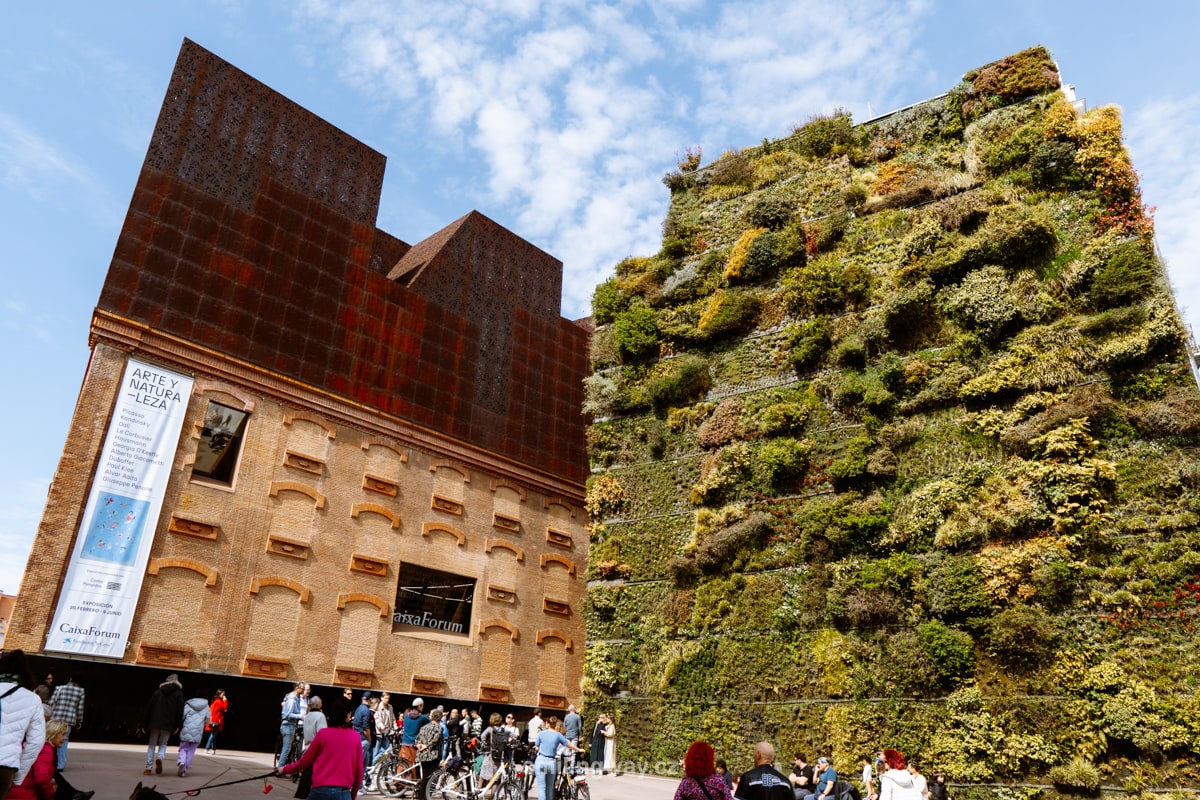
El Retiro Park
Madrid is famous for its parks and gardens. You will find them scattered all over the city, well maintained and frequented by locals.
El Retiro Park is Madrid’s most popular park, just a short walk from the Prado Museum. The perfect place to relax after a morning of art.
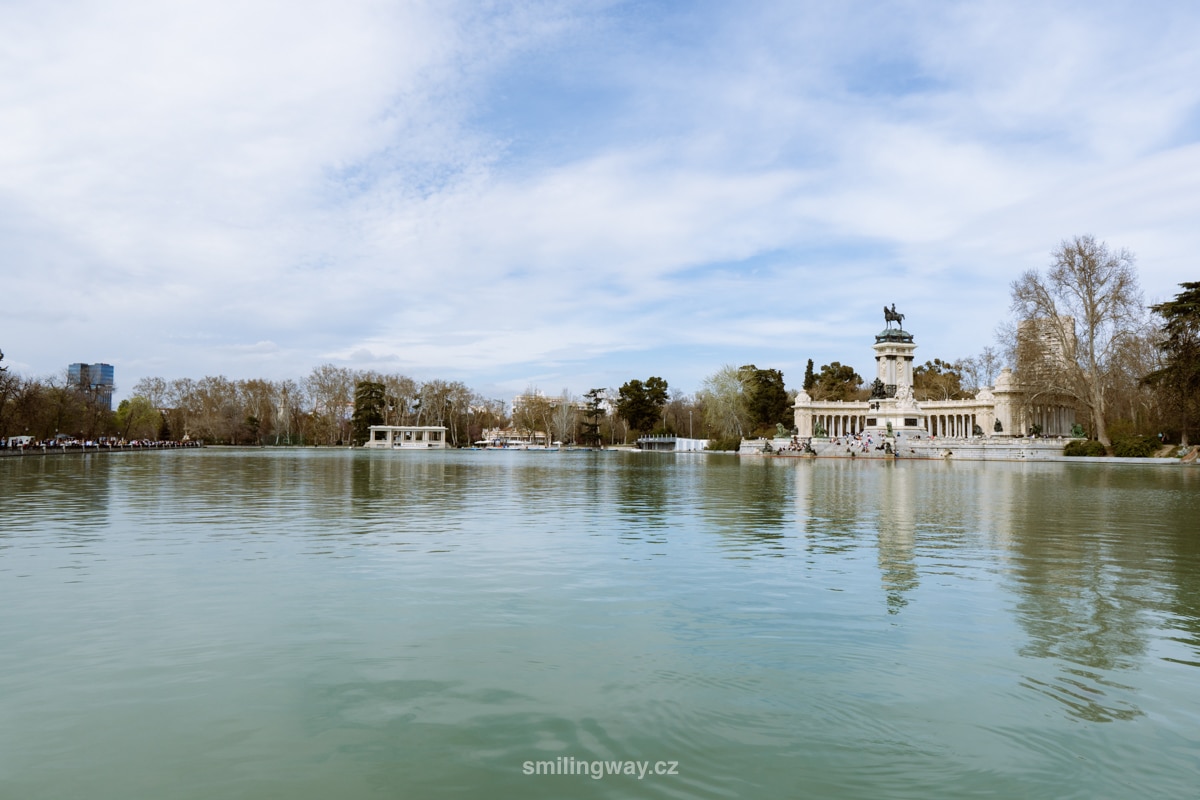
At the heart of the park is the Palacio de Cristal, a glass palace with several works from the Reina Sofía Museum on display. When visiting El Retiro Park, don’t miss the monument to Alfonso XII, which is fronted by a lake lined with cafés. At the northwestern edge of the park guards the entrance to the Puerta de Alcalá, an impressive triumphal arch.
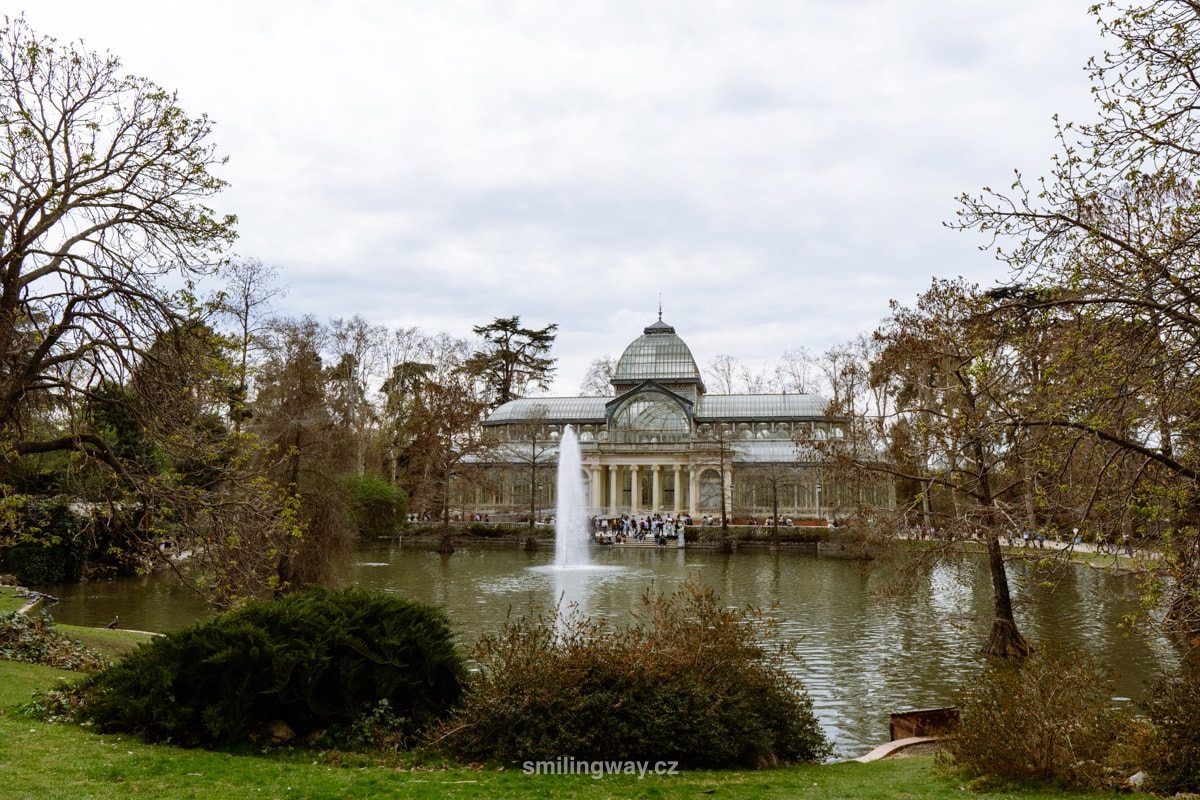
One of the most beautiful places in El Retiro Park is the Cecilio Rodríguez Gardens, located in the southeast of the park. Beautiful gardens full of fountains, flowers and peacocks walking freely. Not far from here you can also visit a garden full of roses.
El Retiro Park is open daily from 06:00-22:00.
☞ Here are useful tips and travel guide to Madrid.
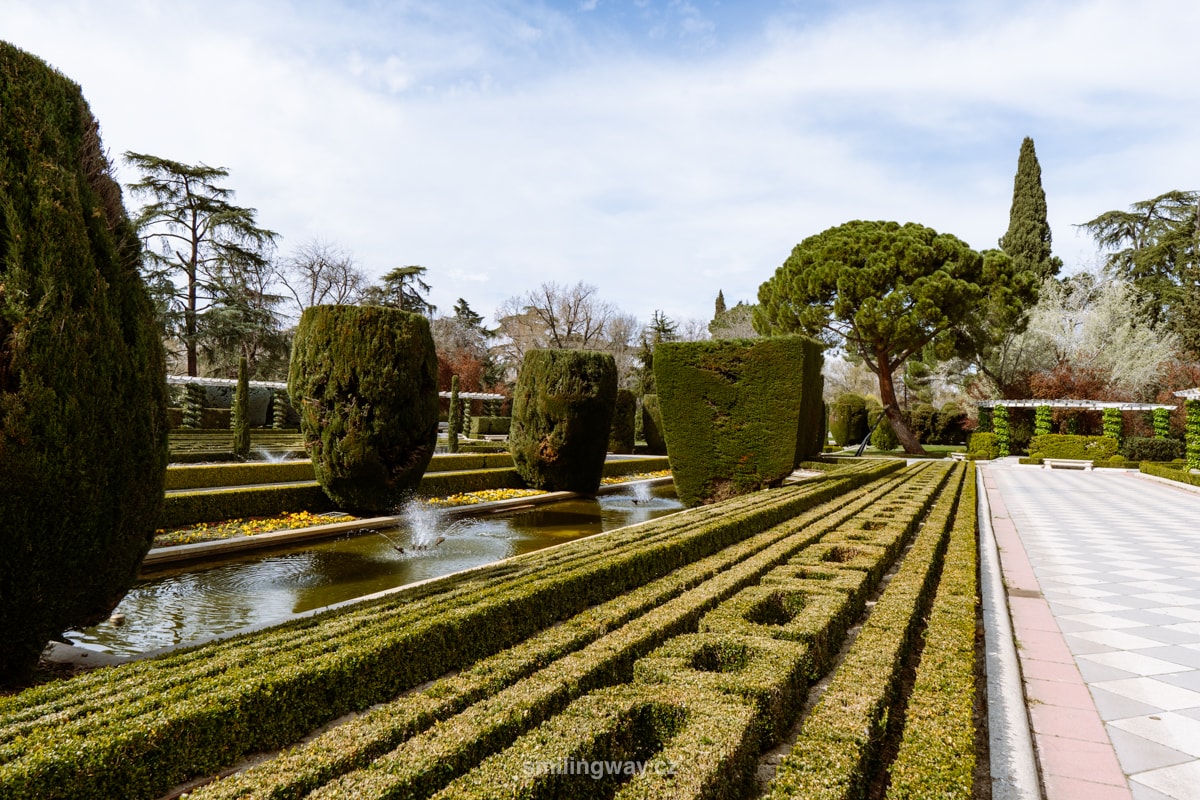

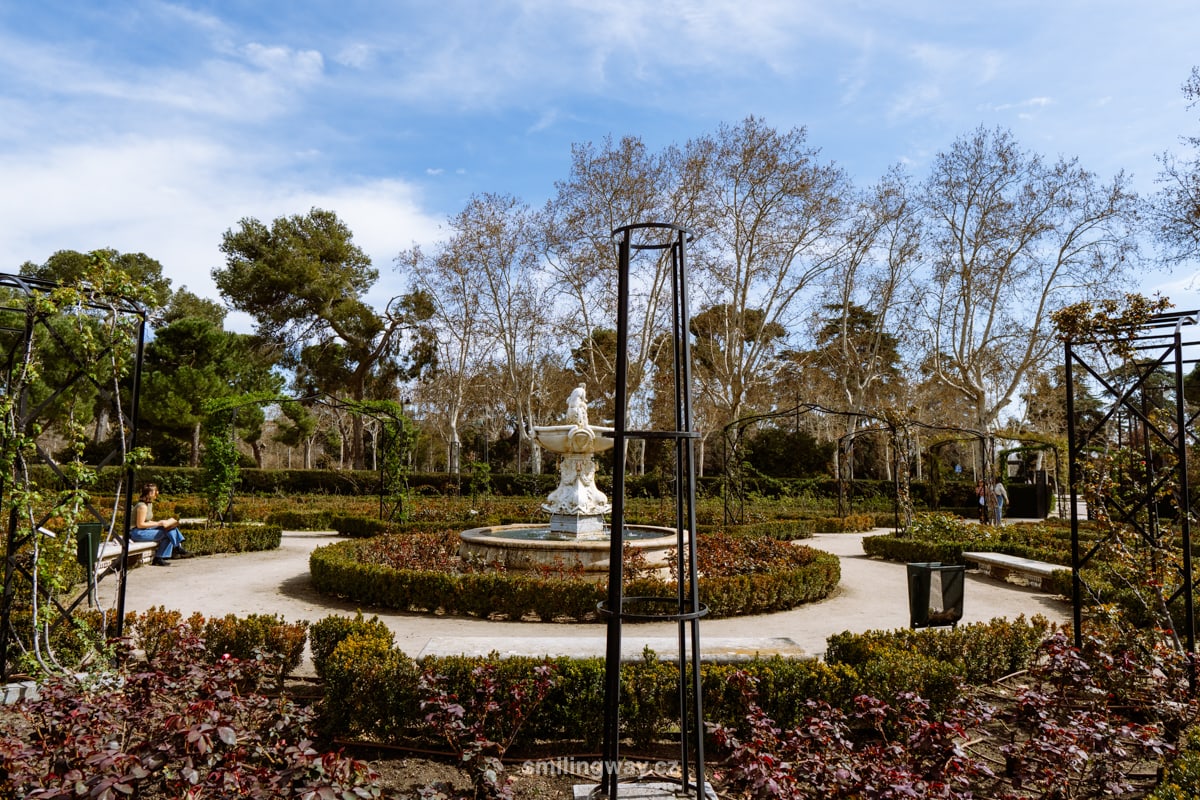
El Retiro Park is adjacent to the Royal Botanical Gardens, which you can visit for a small fee. It is really big, with lots of benches and hidden corners.
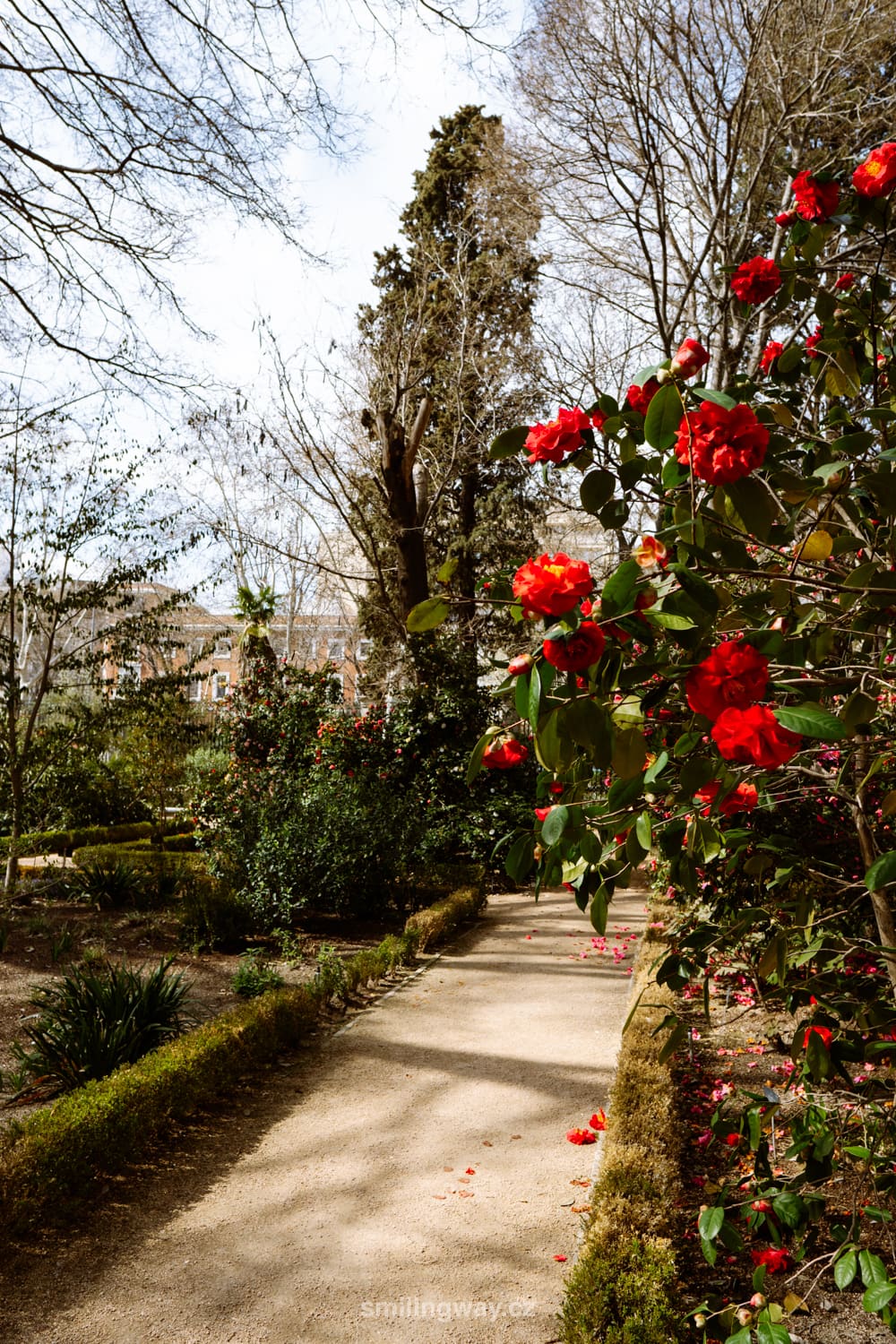
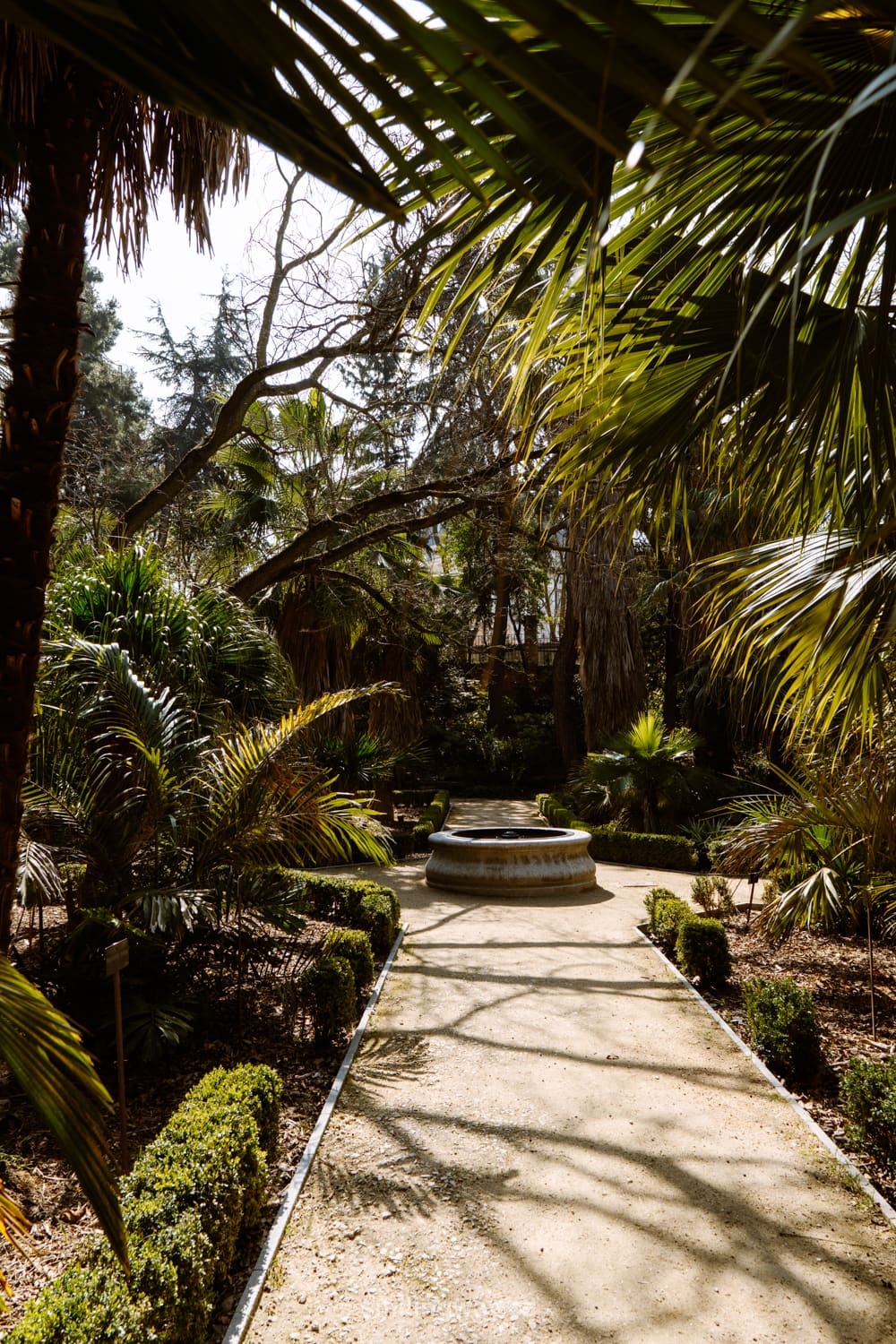
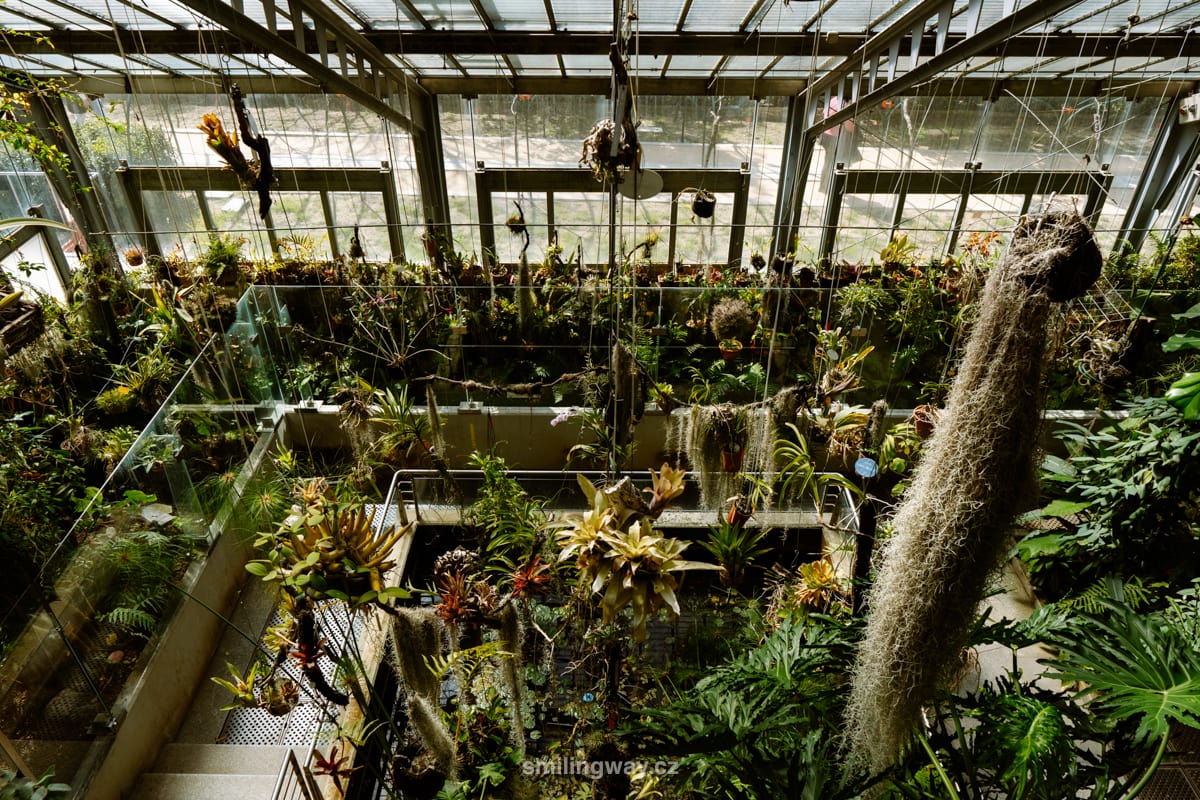
Lavapiés
We will end the day in Lavapiés, a multicultural neighbourhood located west of the Reina Sofía Museum. The district is known for its ancient streets, which are home to communities from all over the world.
Here you can soak up the local atmosphere perfectly. In addition, there are a number of excellent restaurants and tabernas serving authentic cuisine. Madrid has many interesting and very different neighbourhoods. We were most interested in Lavapiés.
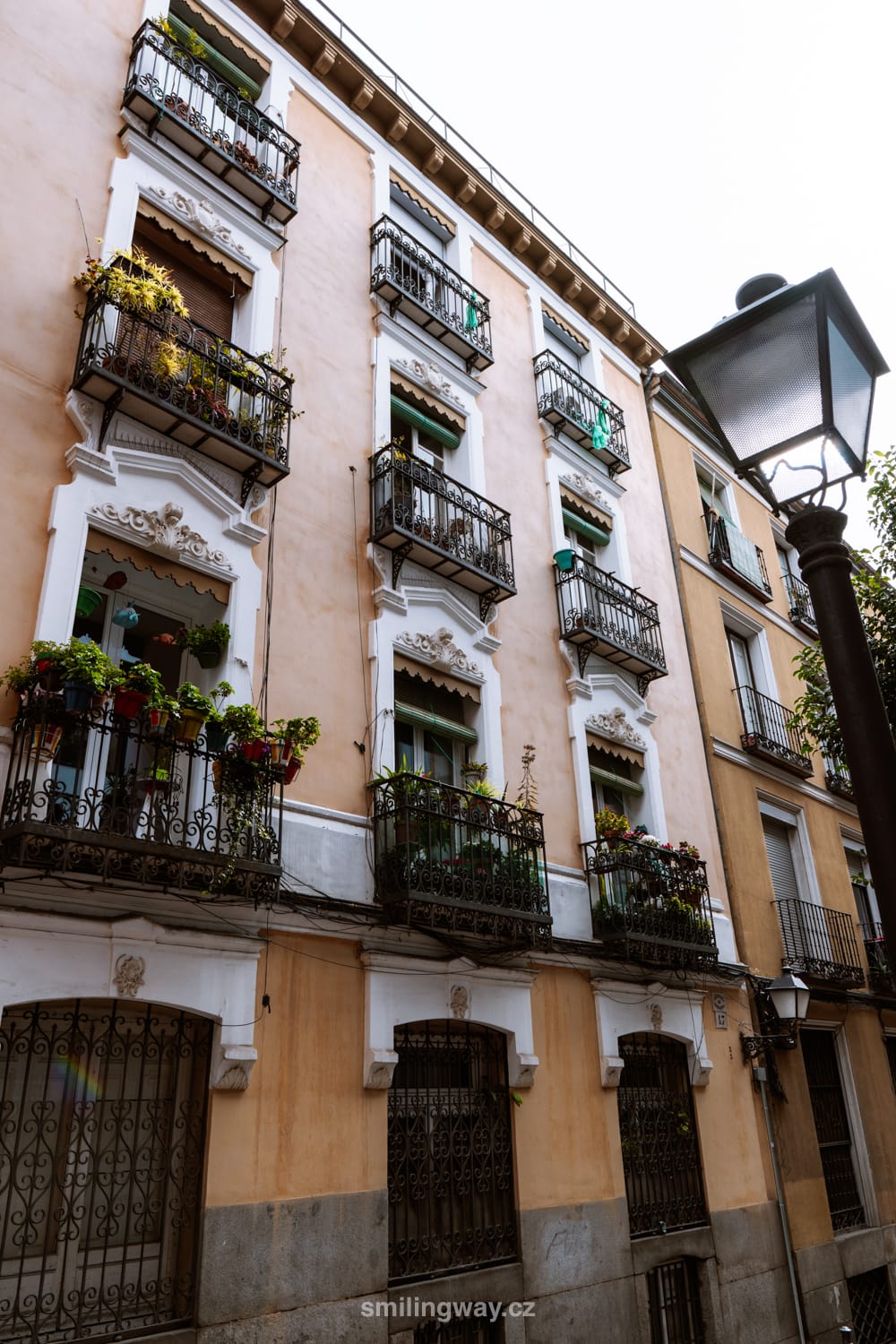
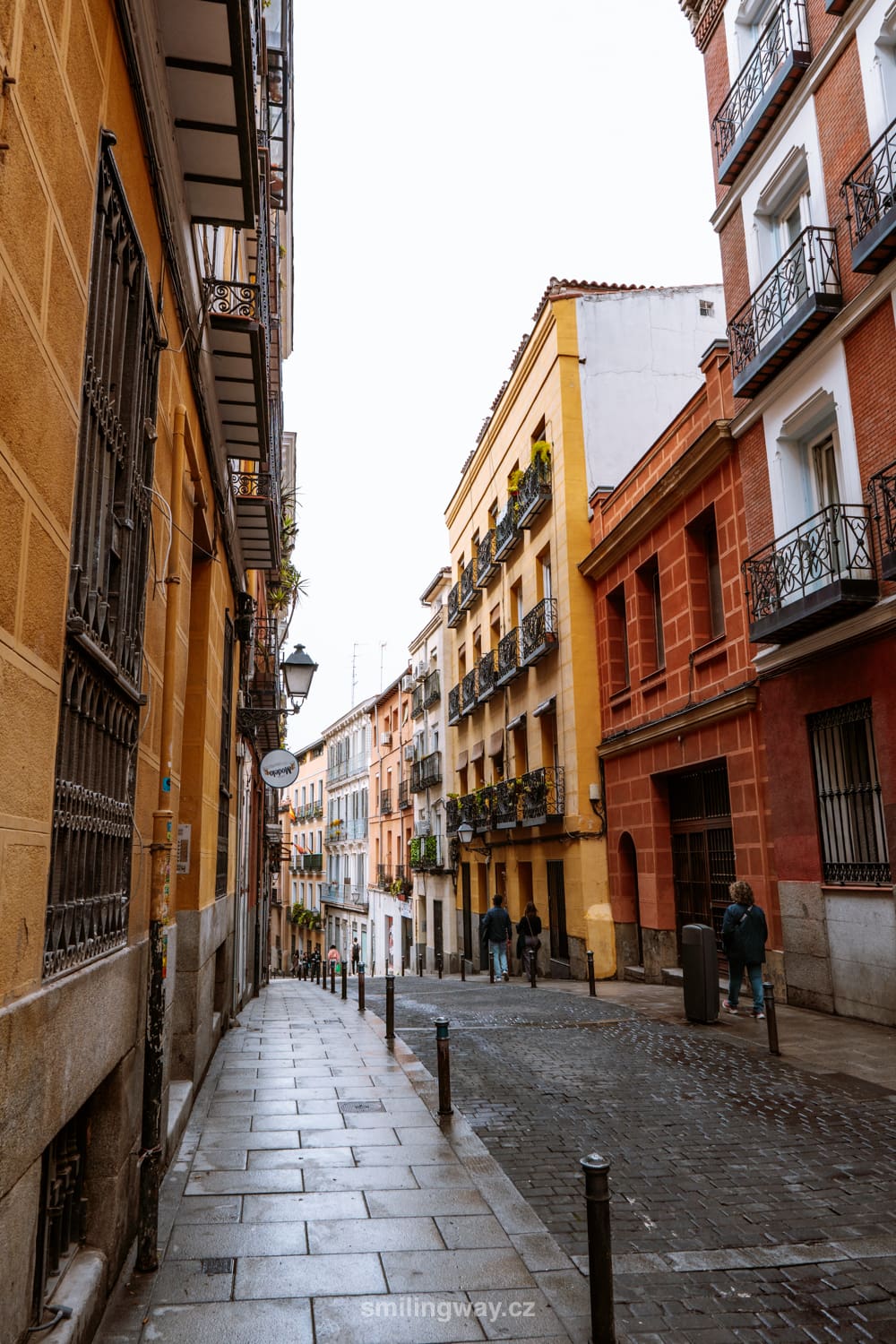
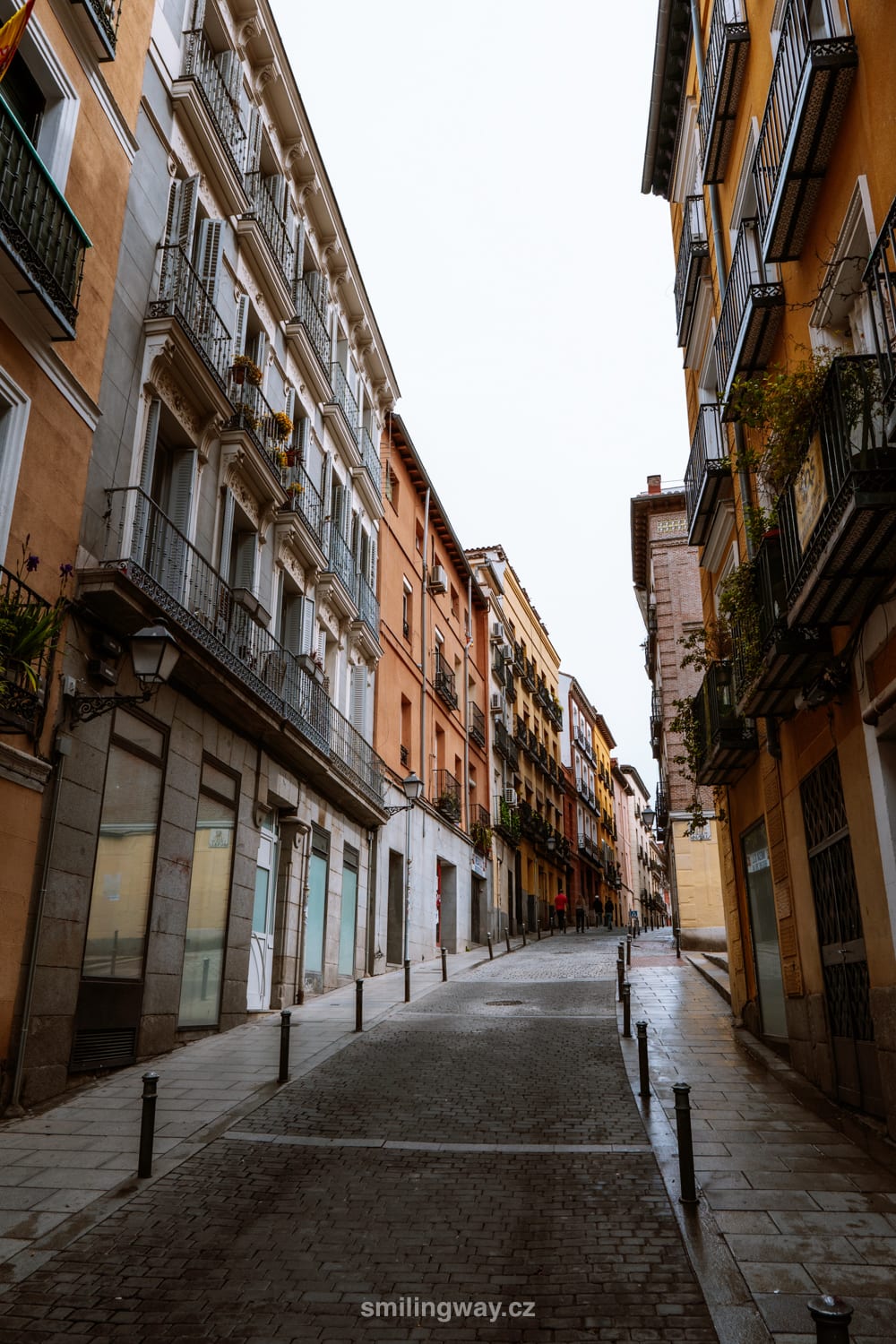
Hotels in Madrid
- Hotel RIU – Iconic city centre hotel with rooftop terrace, restaurant and excellent service
- Hostal Abadia Madrid – 3* guesthouse at a great price right in the centre, with air conditioning and private bathroom
- Ilunion Atrium – Modern hotel with swimming pool, restaurant and excellent access to the centre
- NYX Hotel Madrid by Leonardo Hotels – Stylish 4* hotel with swimming pool, restaurant and minutes from Real Madrid stadium
- Vértice Roomspace – Cheap, modern hotel on the outskirts of town with a restaurant and a short walk from the train station
Hotels in Madrid 😴
How to get to Madrid
The main airport for Madrid is Adolfo Suárez Airport, located on the outskirts of the city. And what airlines fly here from Prague?
- Iberia – the traditional Spanish airline connects Prague with Terminal 4 and offers up to two direct flights a day in high season.
- Ryanair – a low-cost airline that connects Prague to Terminal 1 and often competes on price.
- Czech Airlines – the previous airline is supplemented by Czech Airlines, which flies mainly in high season from April.
☞ Here you can find all flights to Madrid.
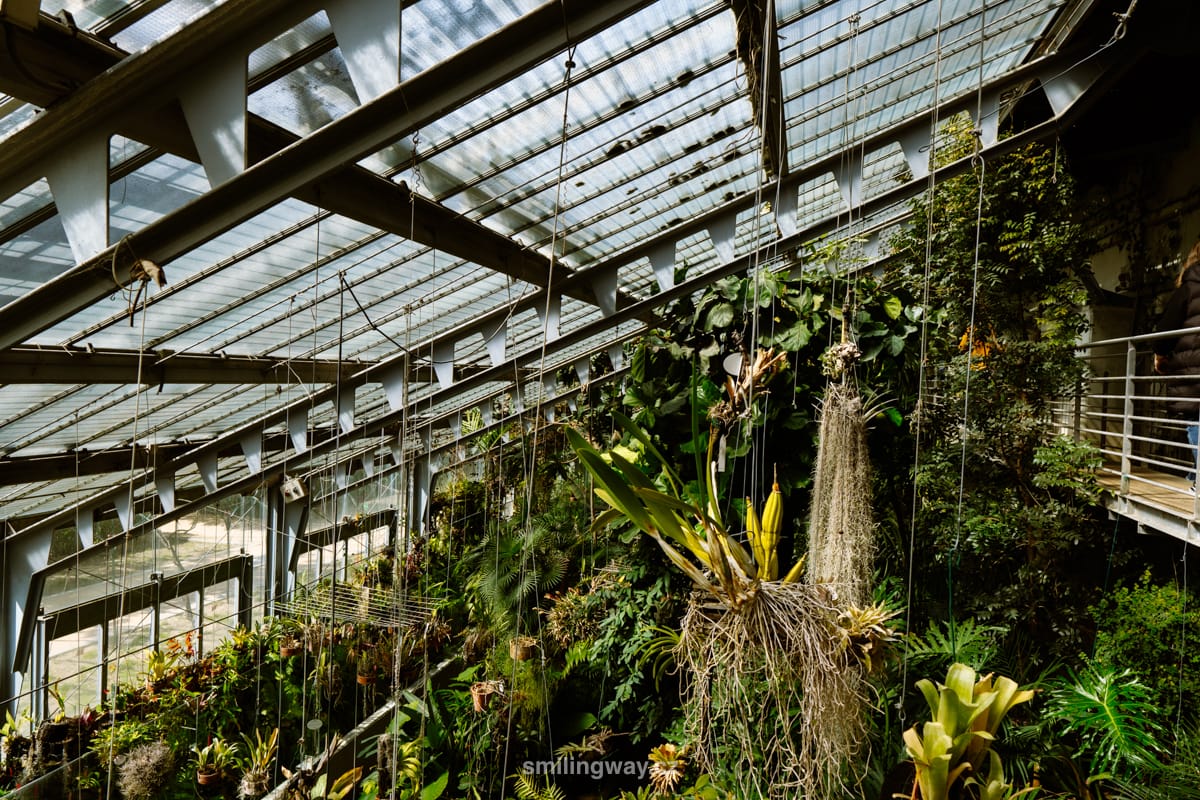
How to get from Adolfo Suárez Airport to Madrid city centre?
The easiest way to get to the airport is by bus, metro or, of course, taxi. In all cases, the journey to the centre takes 25-40 minutes depending on where you get off (the longest time is for Atocha station on the edge of the centre).
The bus (line 203) costs €5 and stops right outside the arrivals hall (buy your ticket from the driver). The buses are wheelchair accessible with space for dropping off suitcases. They depart from T4 via other terminals.
The metro is similarly priced, where you have to change to another line on the way because it doesn’t go all the way to the centre. On the other hand, buses are more frequent than buses, which are often overcrowded.
The official taxis are white with a red stripe and stop just behind the buses in front of the arrivals hall.
Hotels in Madrid 😴
How to get around Madrid
The basis of Madrid’s transport is the metro, EMT buses and Cercanías suburban trains. The Cercanías metro and trains are particularly useful for longer distances, while buses are great around the centre or where the metro doesn’t run.
You need a red TTP contactless card to travel on the metro. This can be bought simply from a machine in the metro station and costs €2.50. The card is not linked to a person, so more than one person can use it at the same time. Valid for 10 years.
You can pre-load tickets onto the card – individually for €1.50 or a package of 10 tickets for a discounted price of €12.20 (look for the name Metrobús). Tickets apply to both metro and buses. The price is valid for zone A, which includes almost the entire city except for the airport (there is a surcharge for the airport). You can see the zones on the map below.
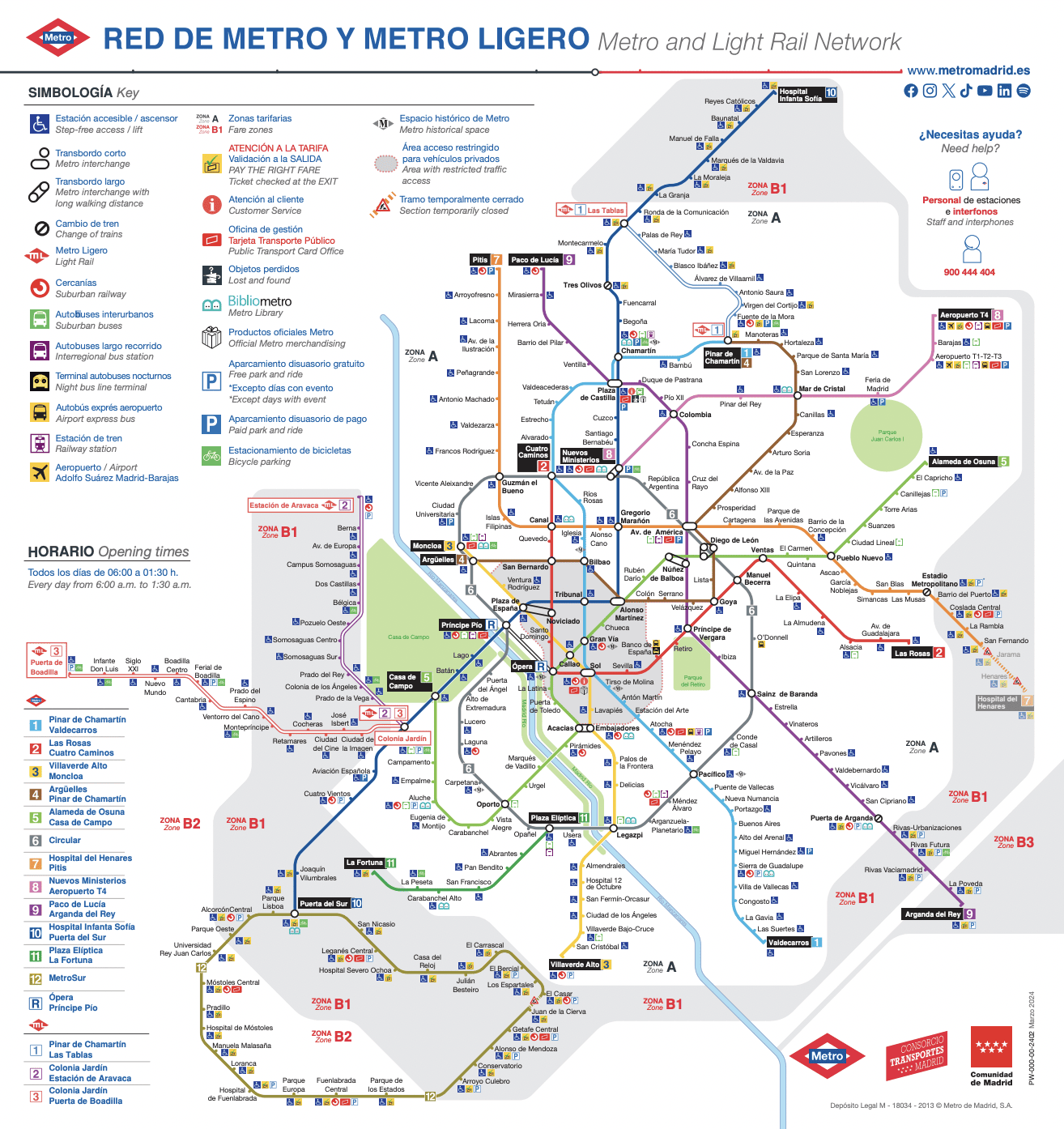
Metro and buses are complemented by Cercanías commuter trains. These are marked with a C and a number – for example C1 (for the metro it is E and a number or just a number). You can also change trains at some metro stations. However, you have to buy your ticket separately, either at the ticket office or at a ticket machine (metro tickets are not valid here). Within the city, a one-way train ticket costs €1.70.
☞ Here is a downloadable map of Cercanías metro and trains.
For up-to-date fares, you can use the Citymapper app, which provides the closest transport information for similar sized cities.
In addition to public transport, you can also use taxis – the official taxis are white with a red stripe. Just wave at them on the street. In addition to taxis, there’s also Uber and Bolt.
☞ Read our detailed guide to transport in Madrid.
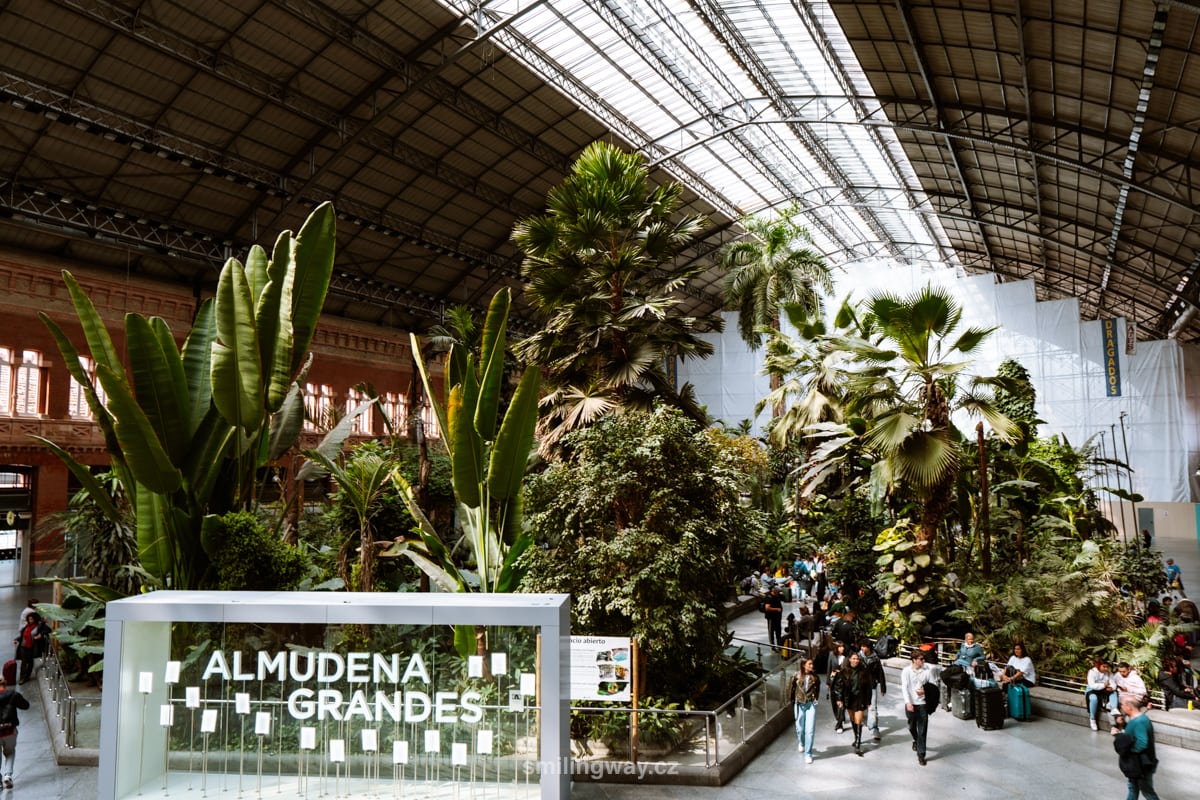
Plan your trip quickly and easily. If you buy something through our links, we get a small commission. You pay nothing extra. Thank you!
Do you have a question about our Madrid 3 days itinerary? We’ll be happy to answer it in the comments below. Have a safe journey!
More information about Spain
MADRID: Get inspired by the best things to do in Madrid. Here are tips and guides on how to enjoy Madrid. Read our detailed guide to transport in Madrid.
BARCELONA: Check out tips on things to do in Barcelona (entrance fees, opening hours, photos, map) or plan your trip with 3 days Barcelona itinerary. If you have more time, here is an itinerary for 4 days in Barcelona.
SPANISH CITIES: Valencia is another beautiful city in Spain. Granada is a historical gem, home to the world-famous Alhambra Palace. Seville will captivate you with its beautiful architecture and the Alcázar Fortress. Malaga has it all – rich history and long sandy beaches.
SPAIN: In our list of the most beautiful places to visit in Spain, we give you tips on what to see in Spain.
